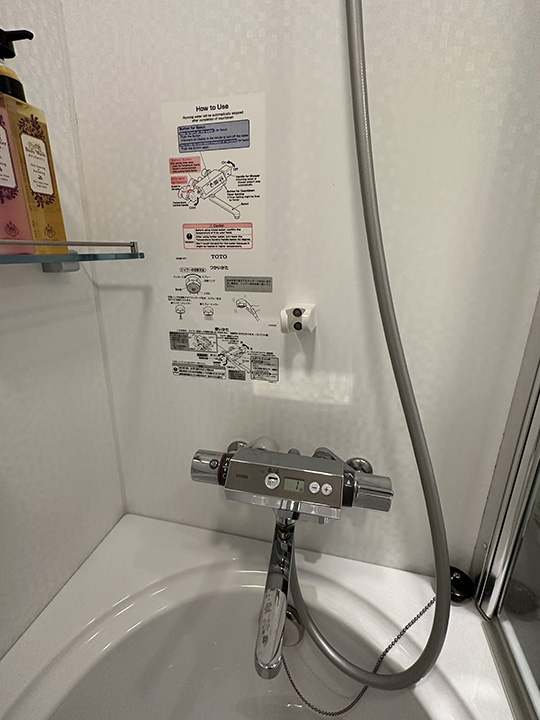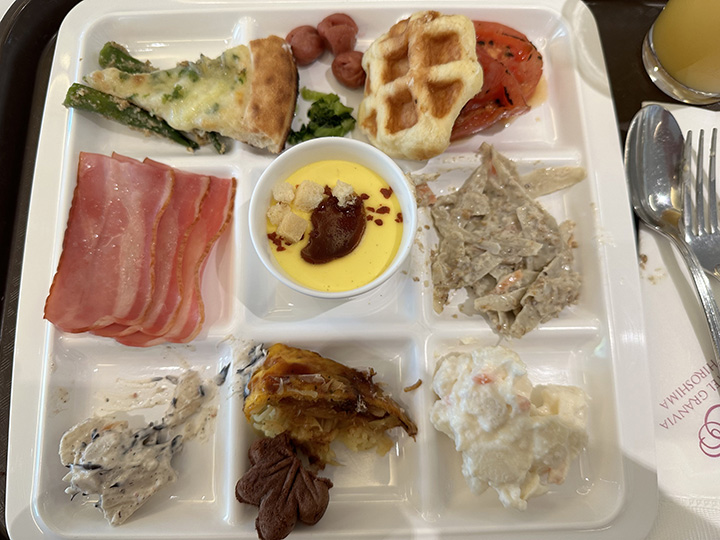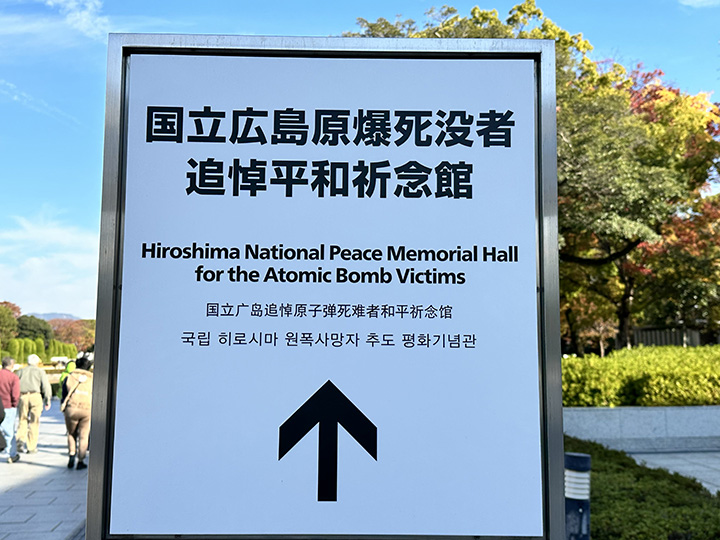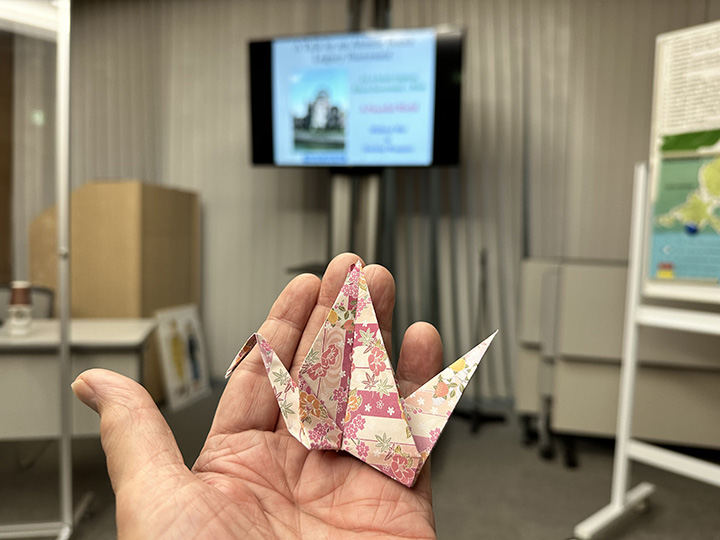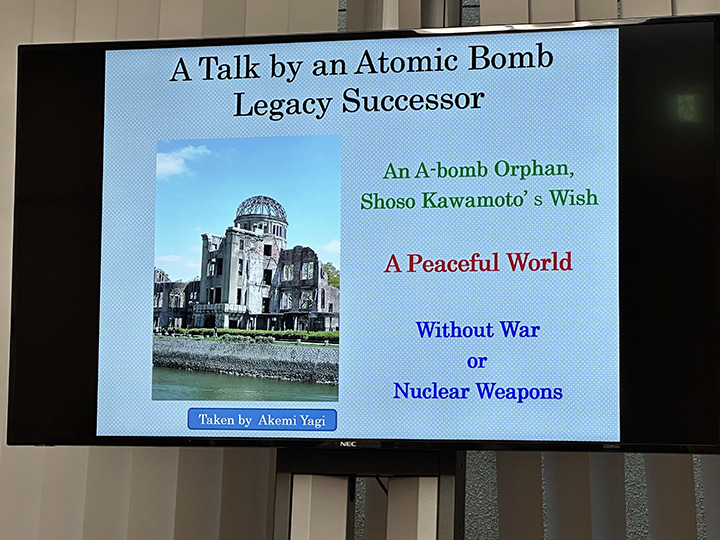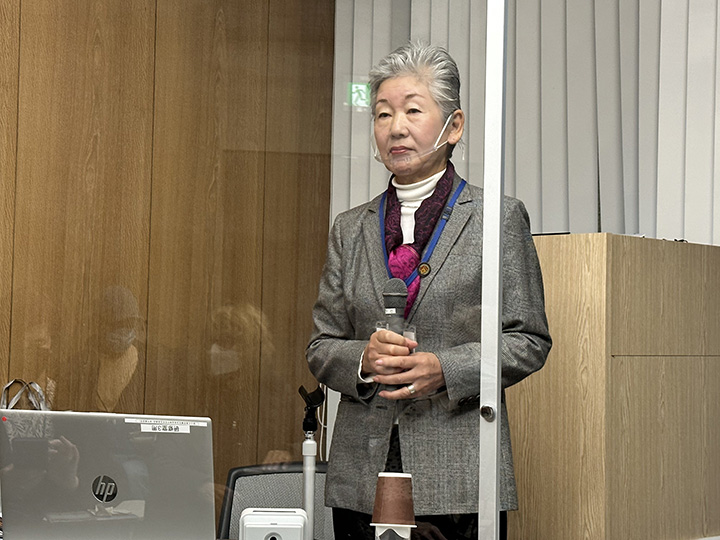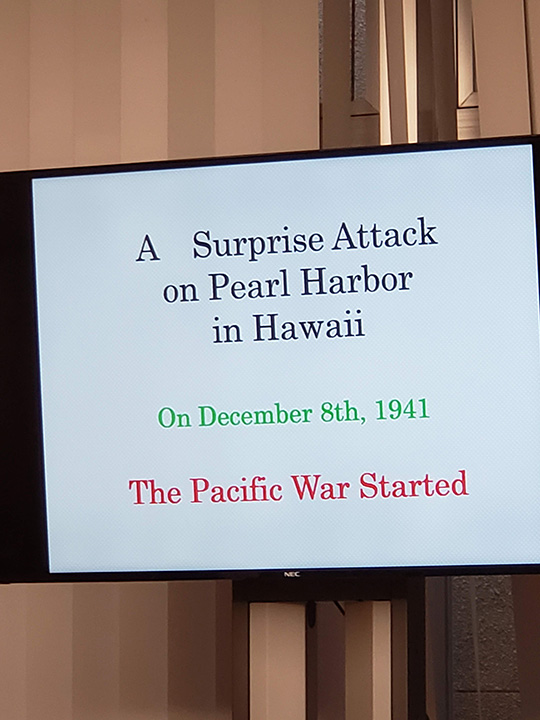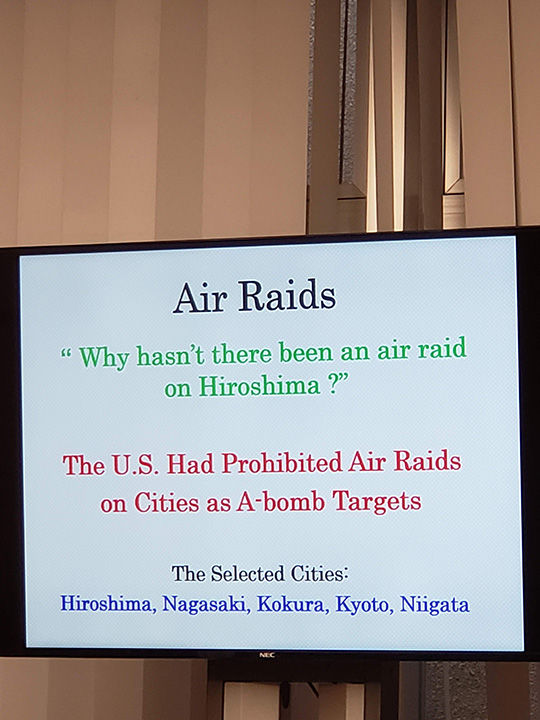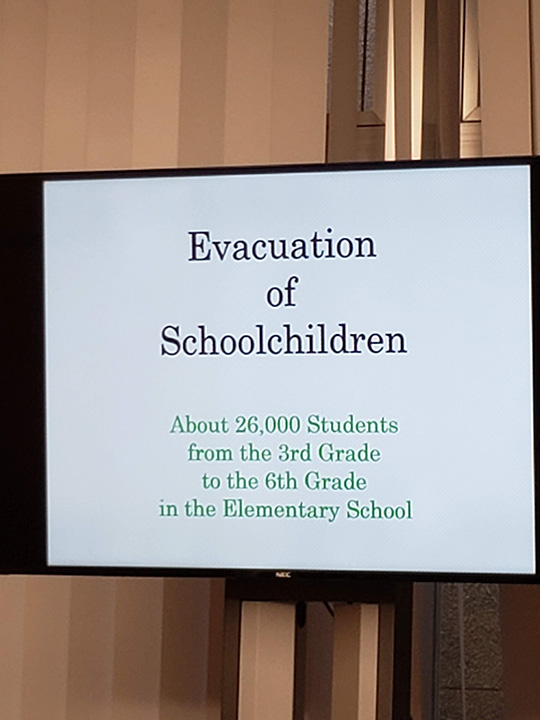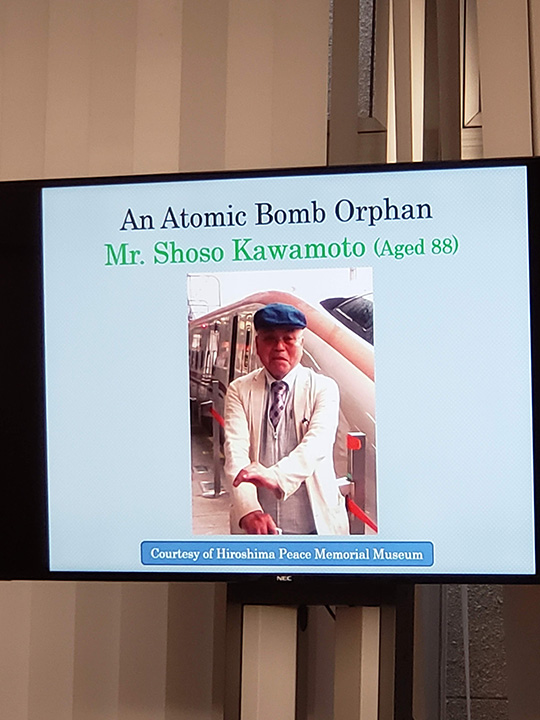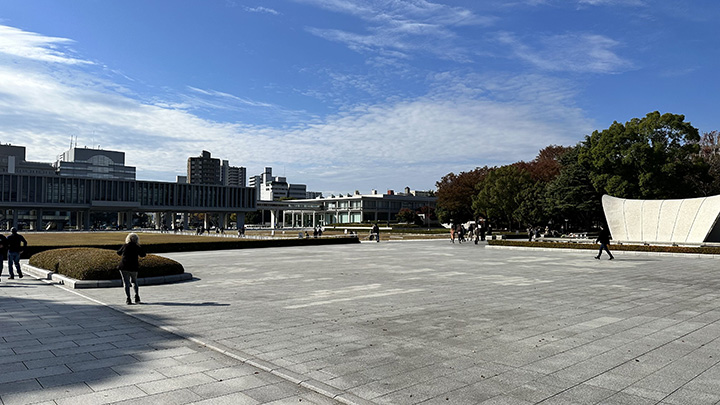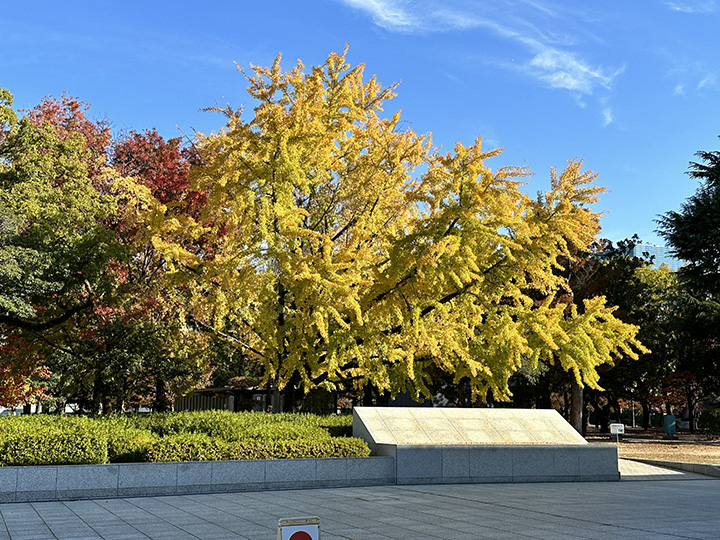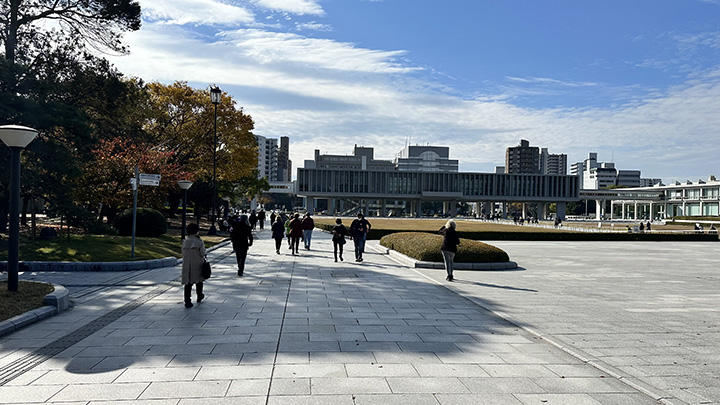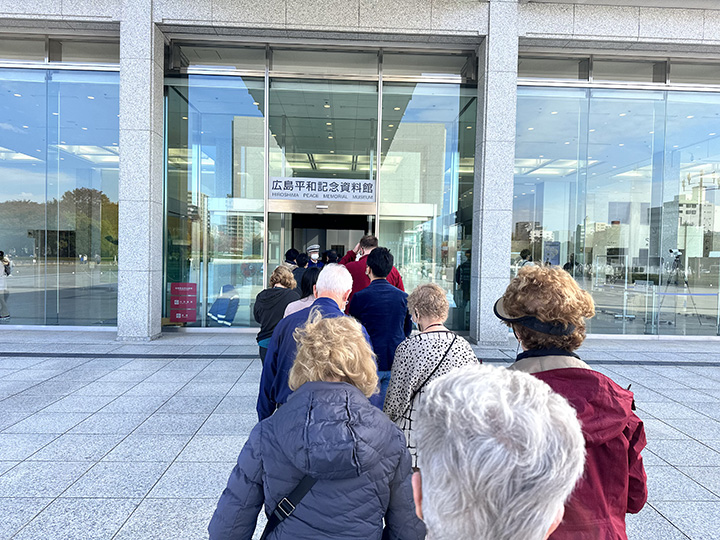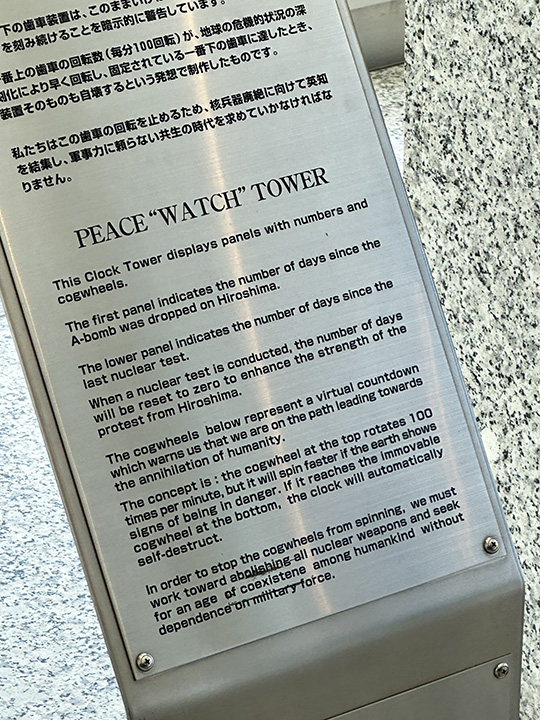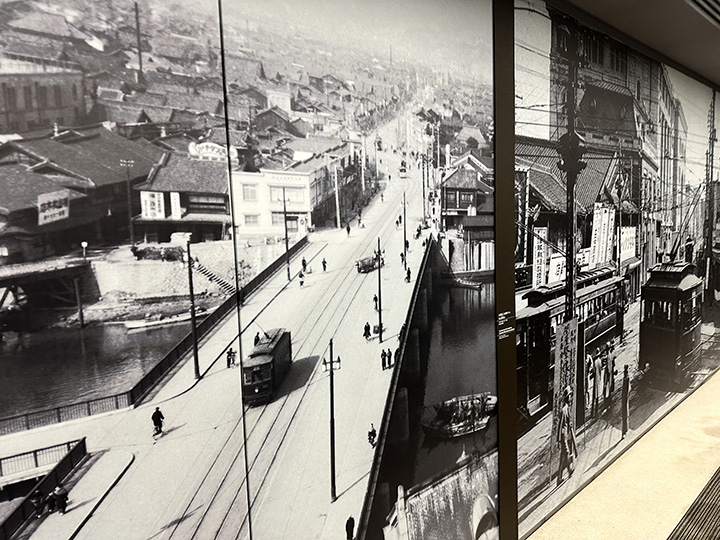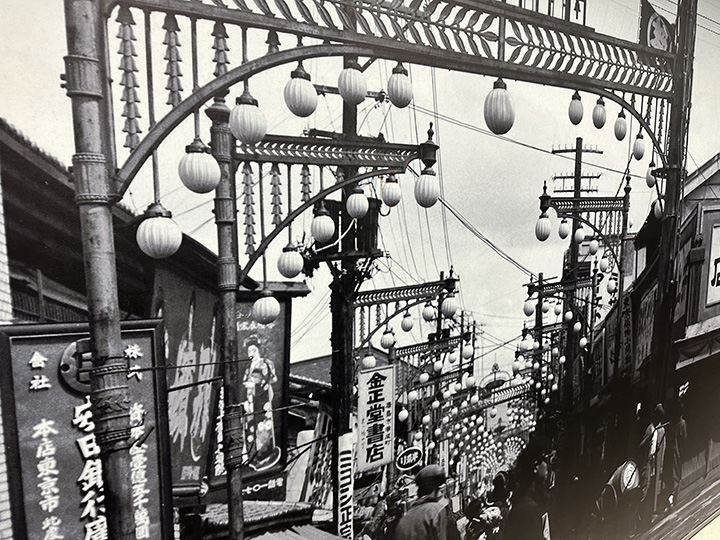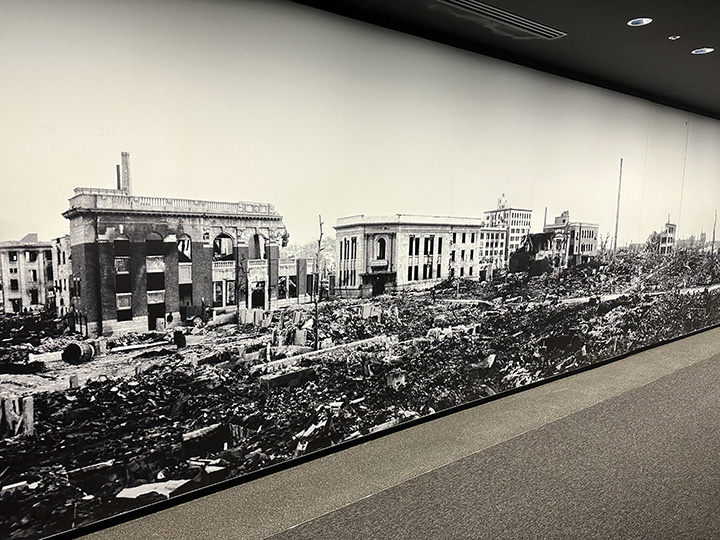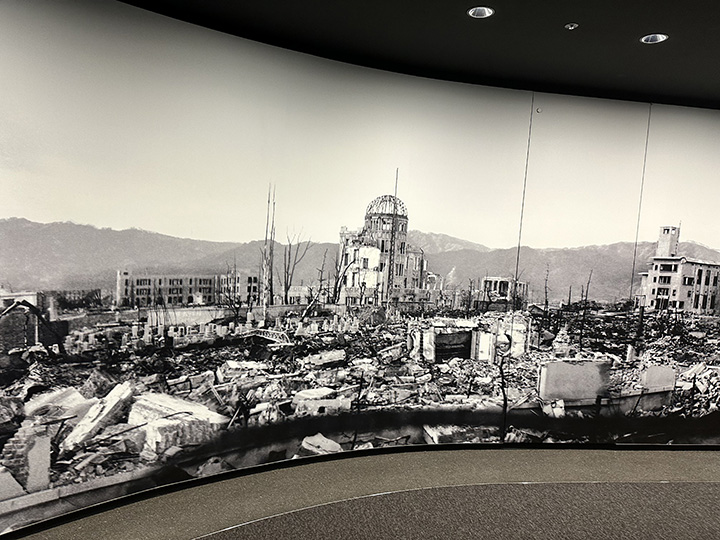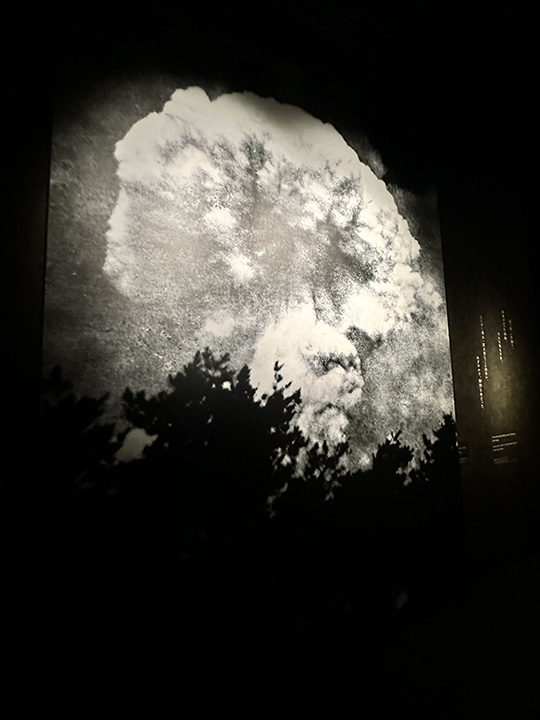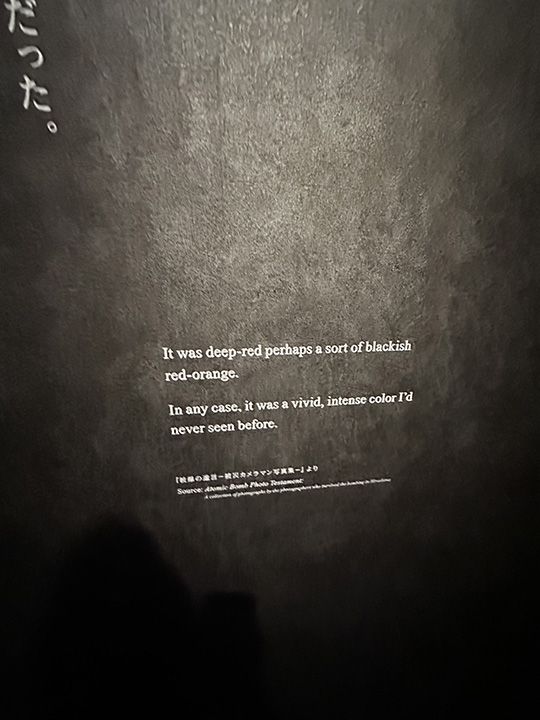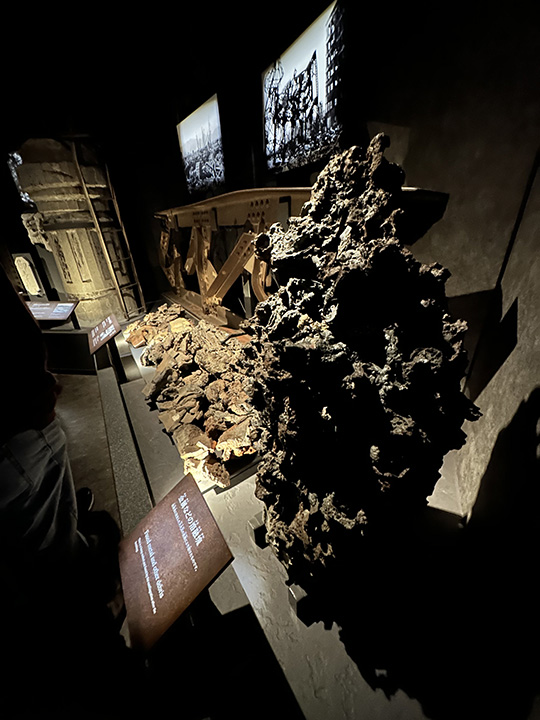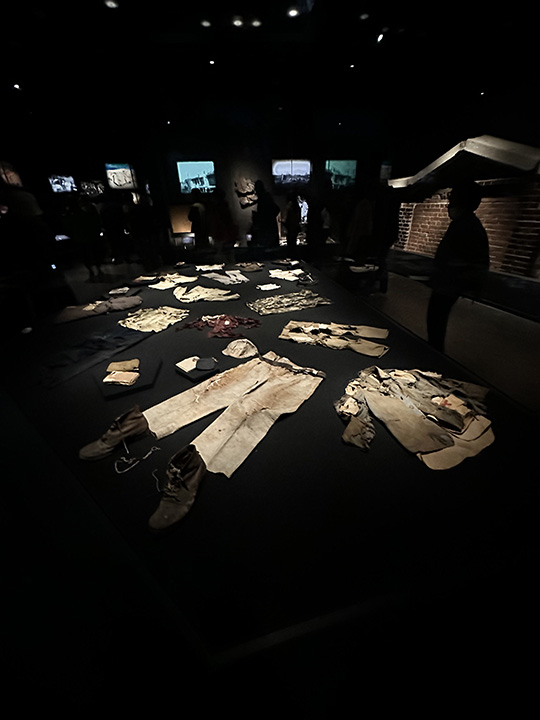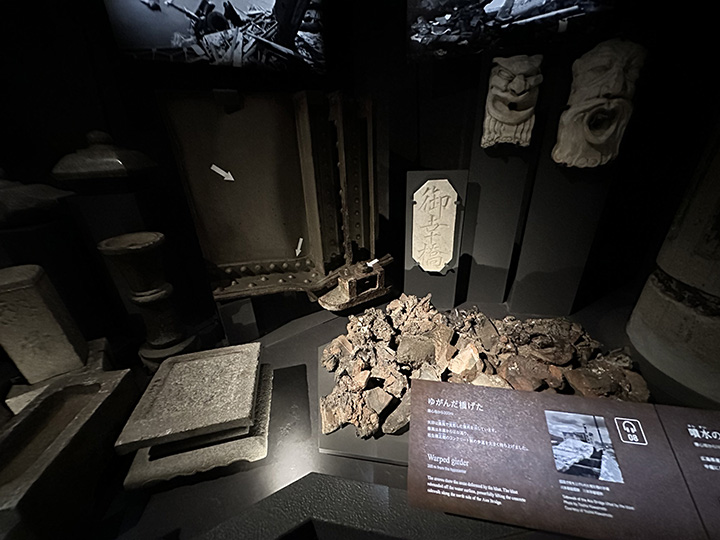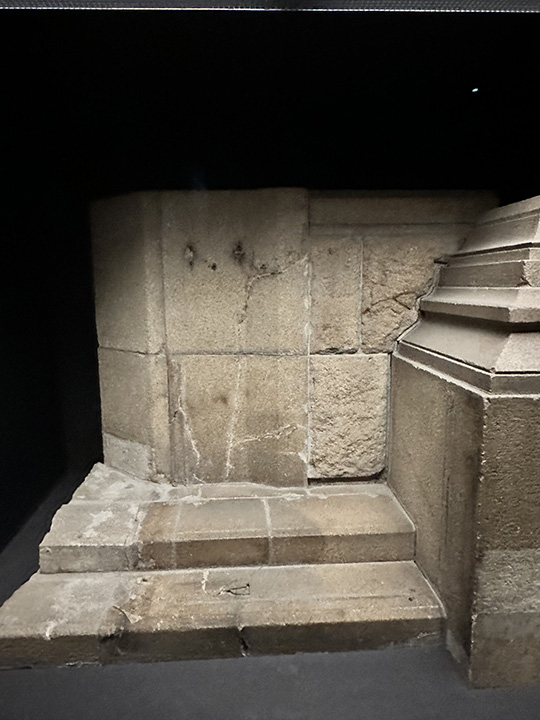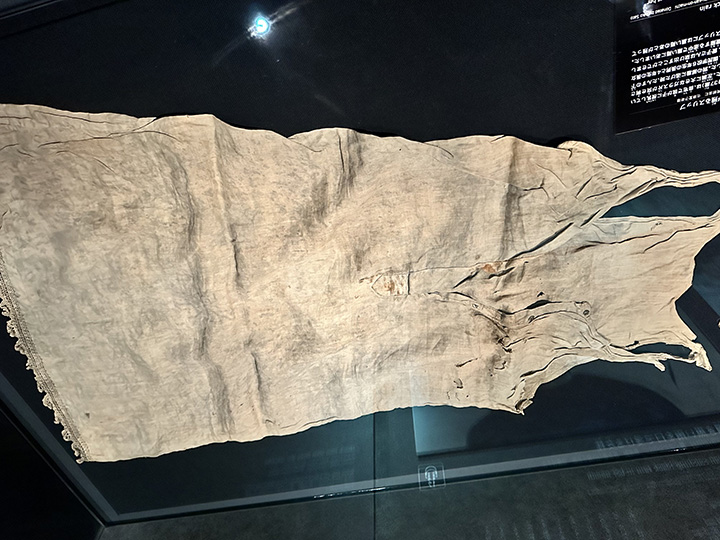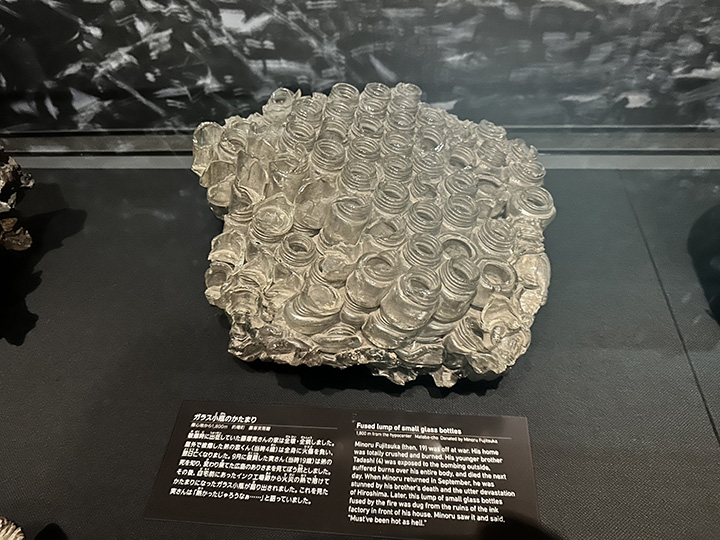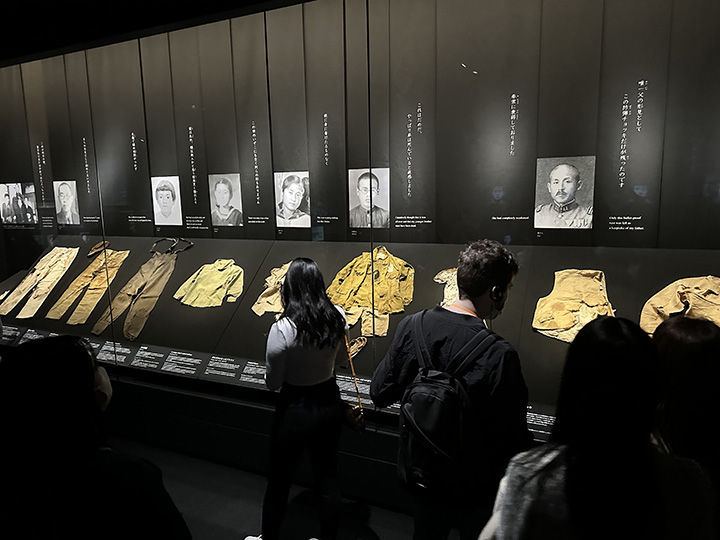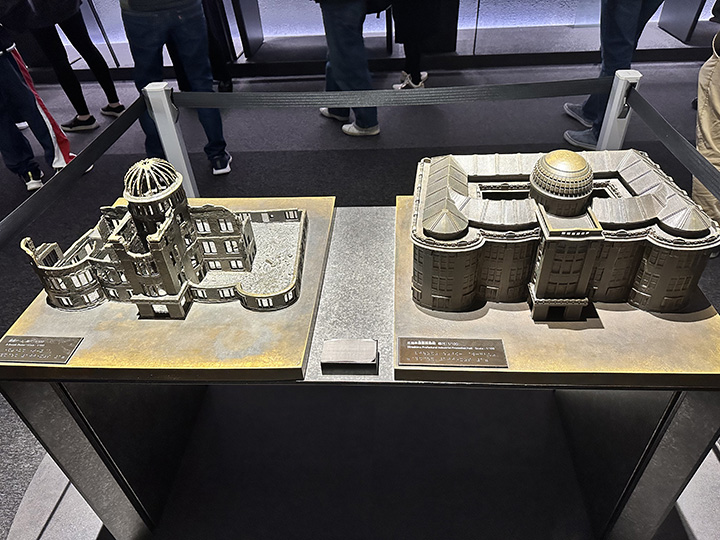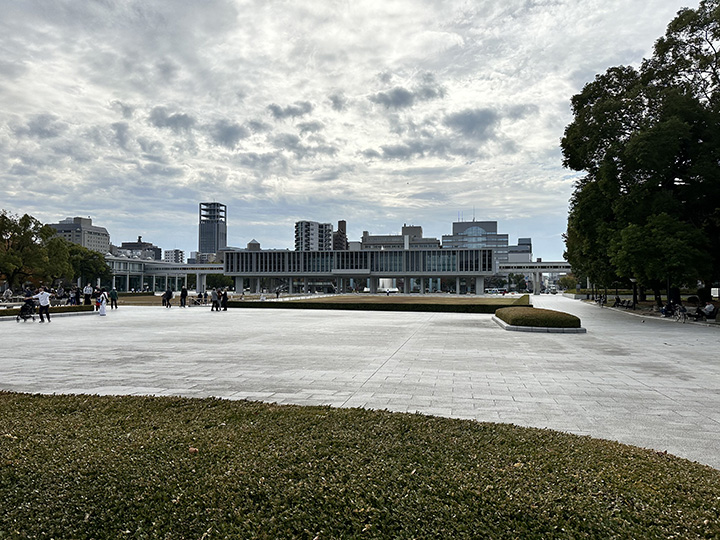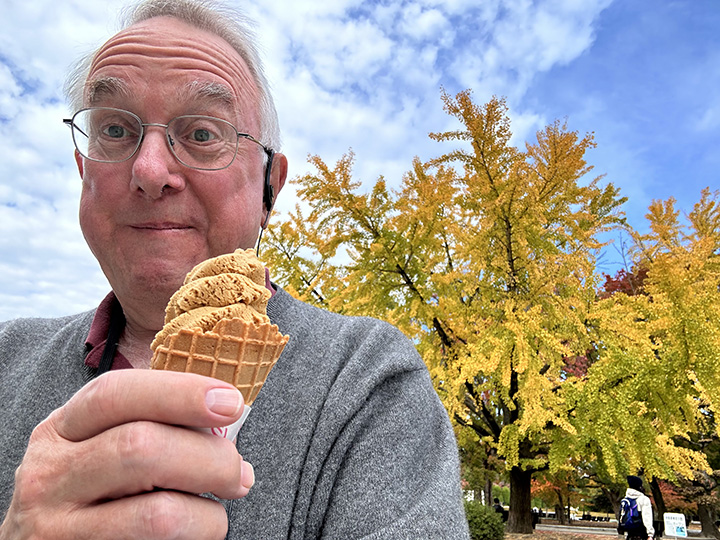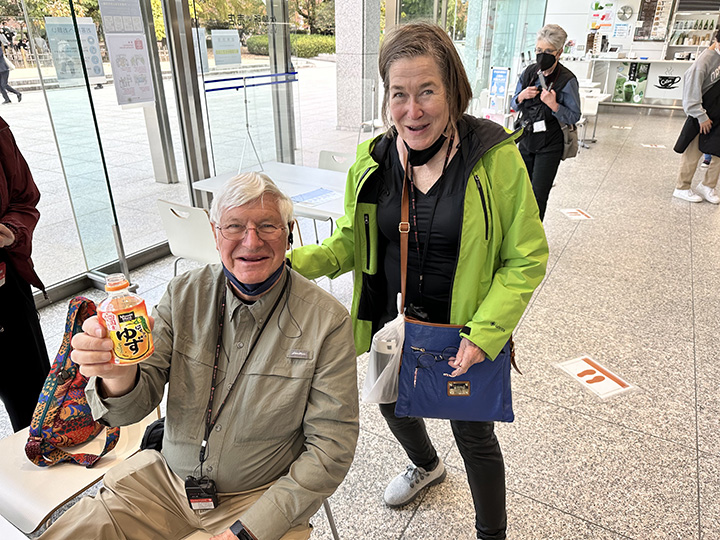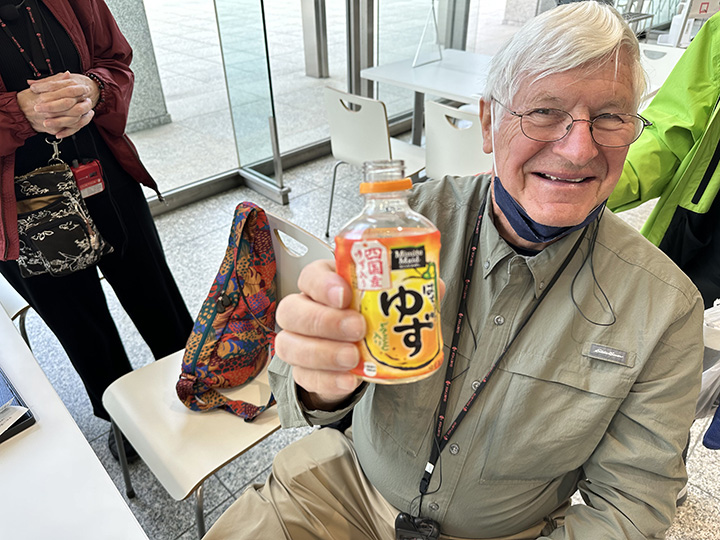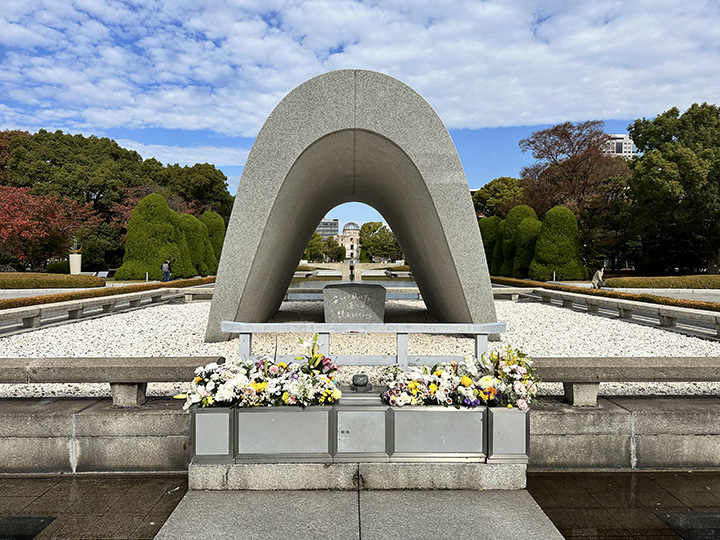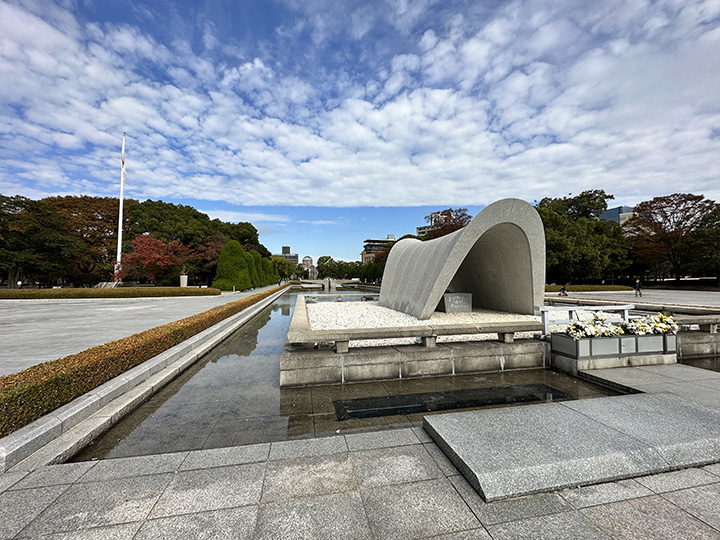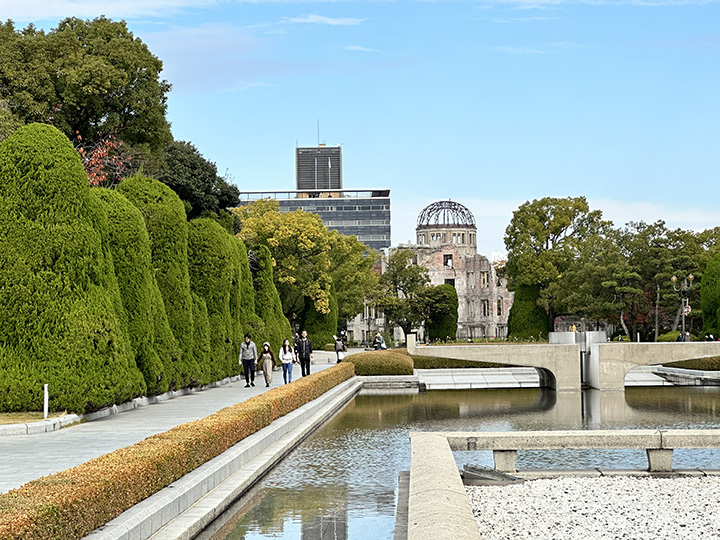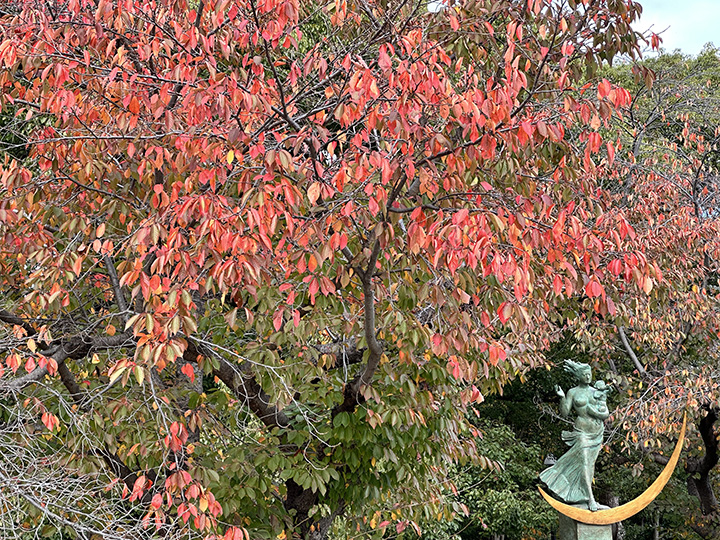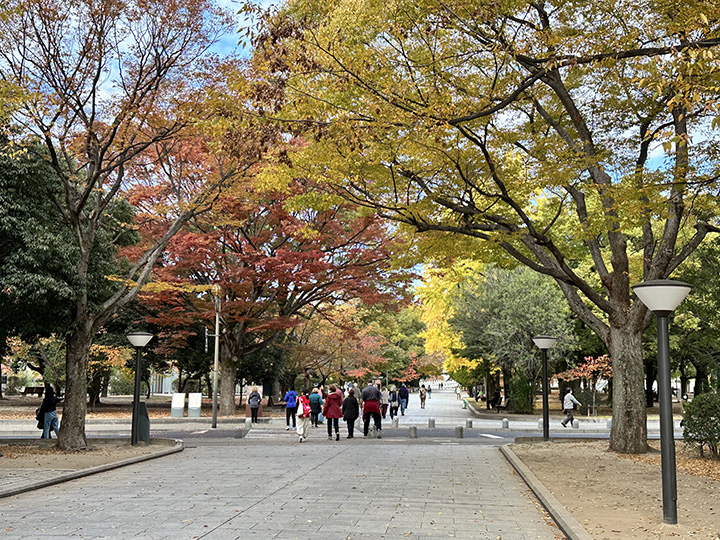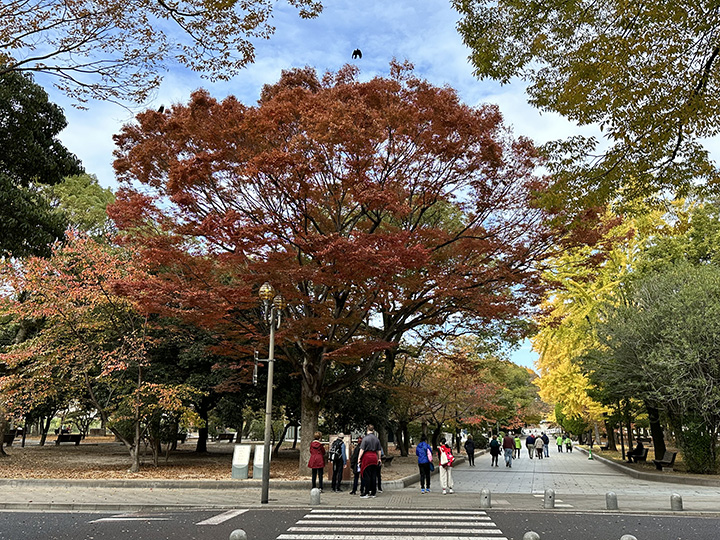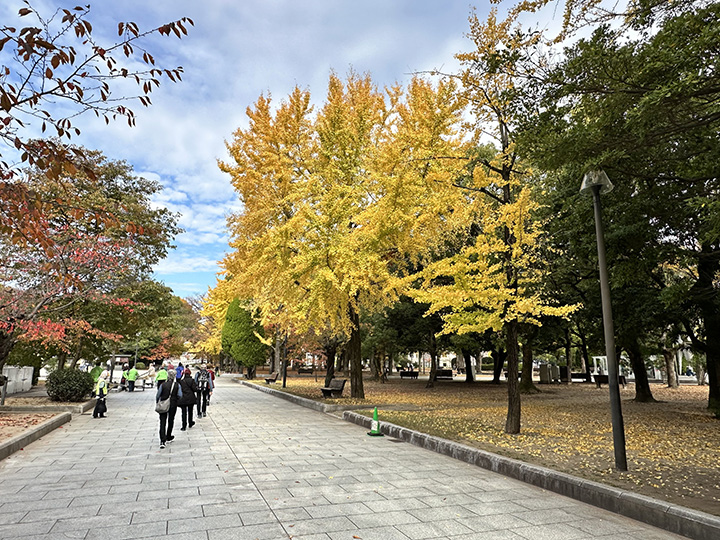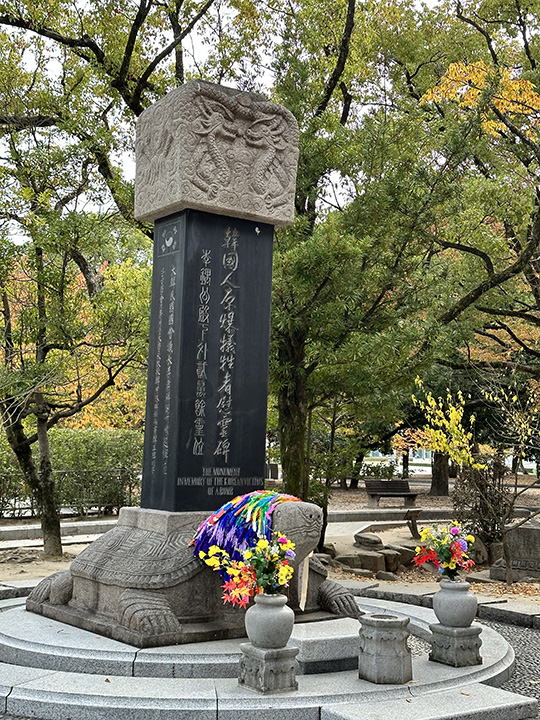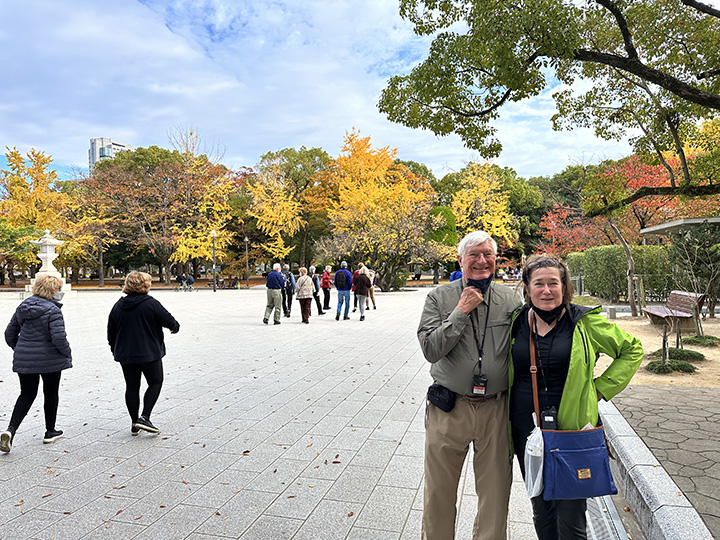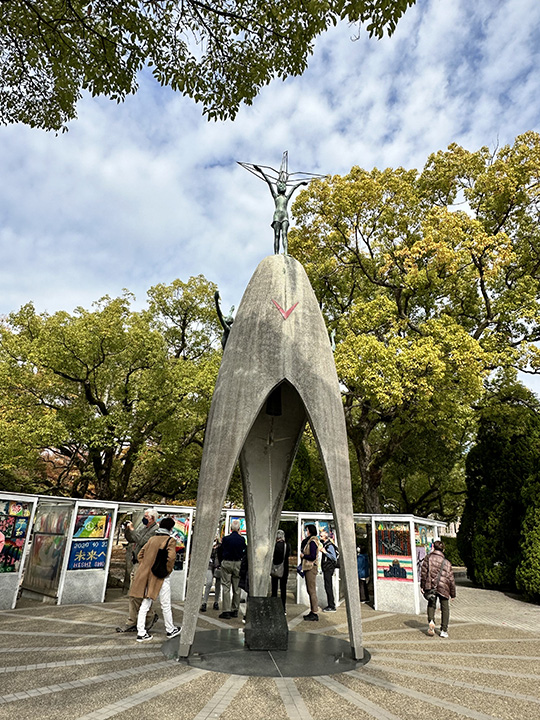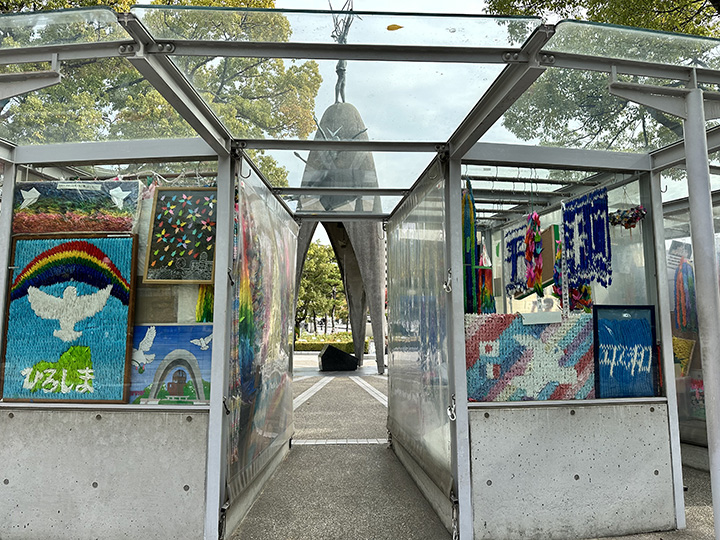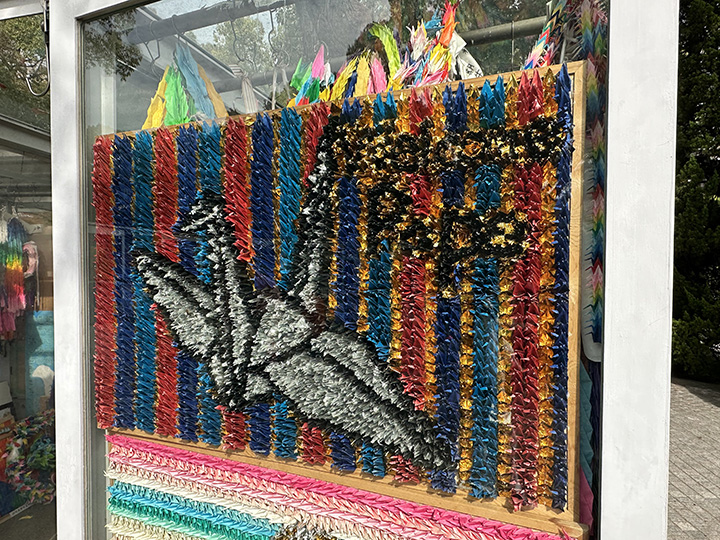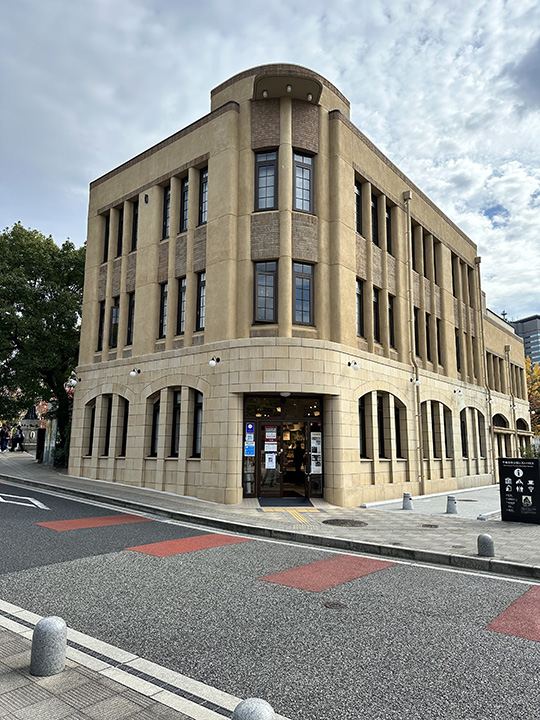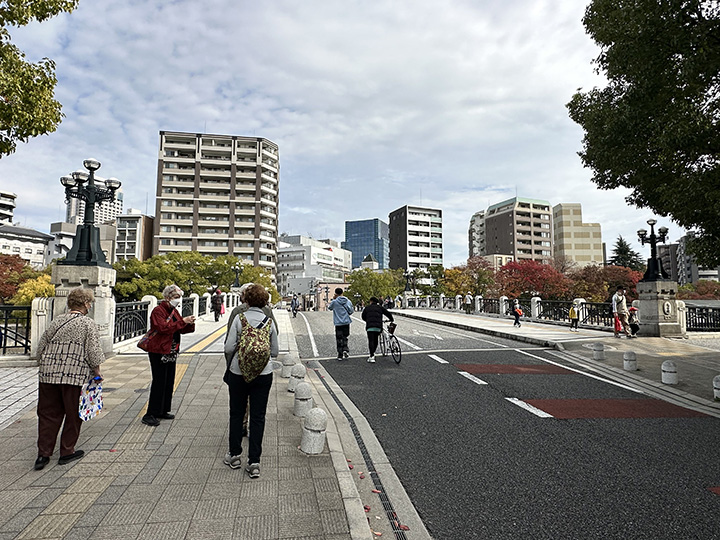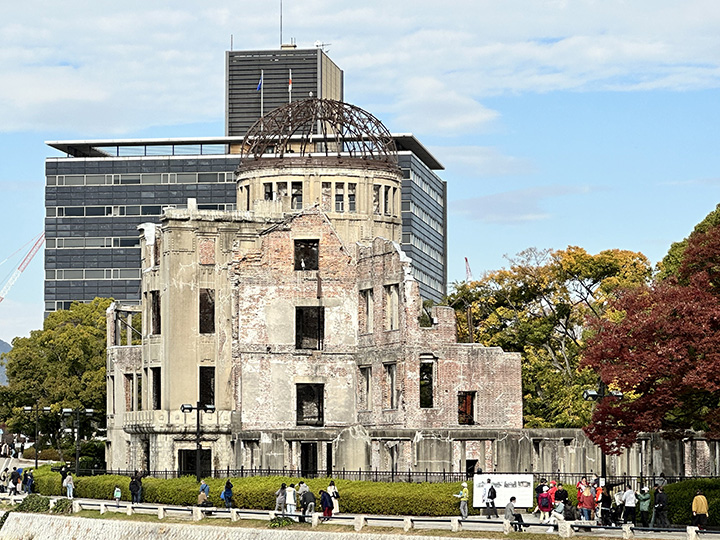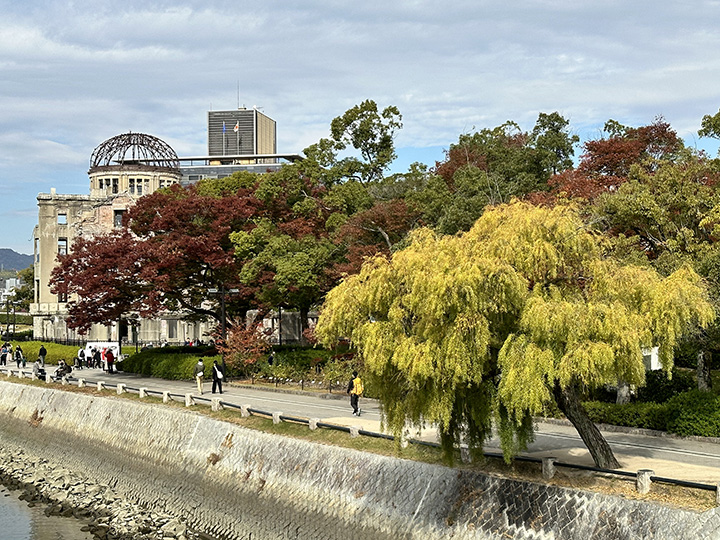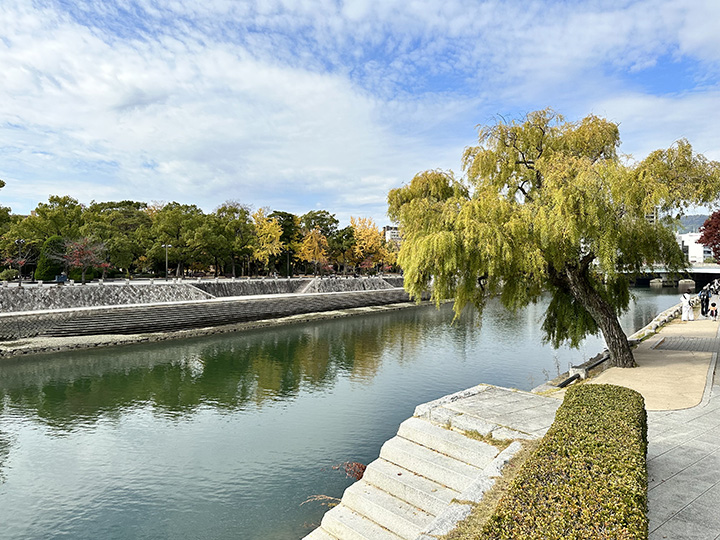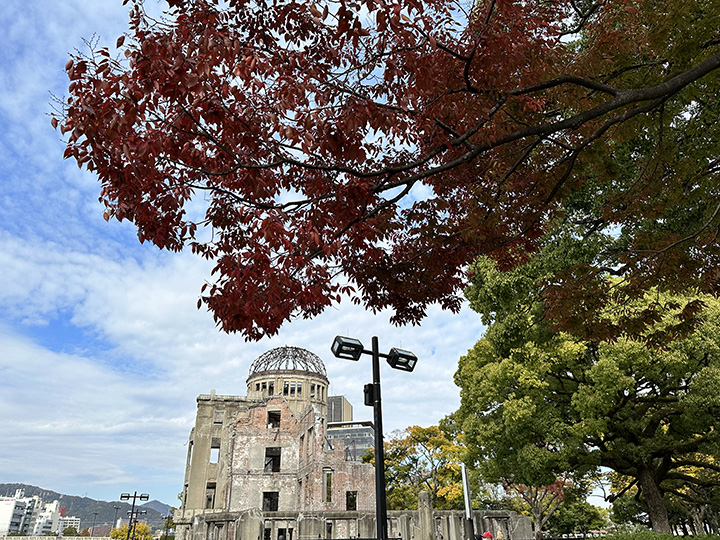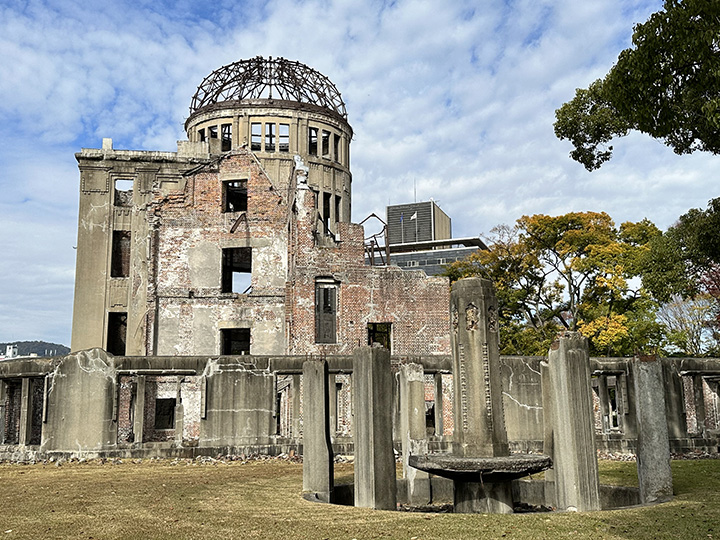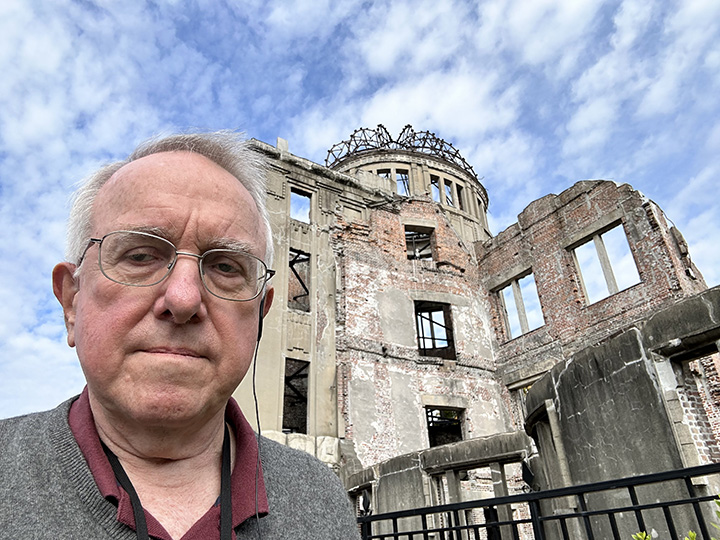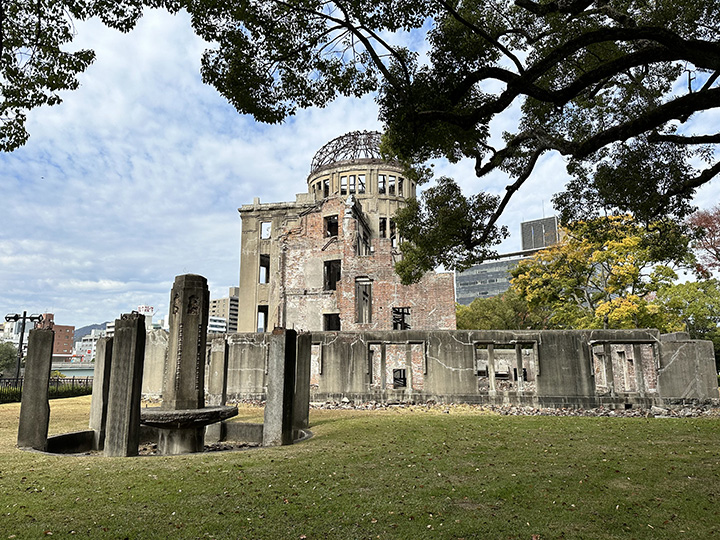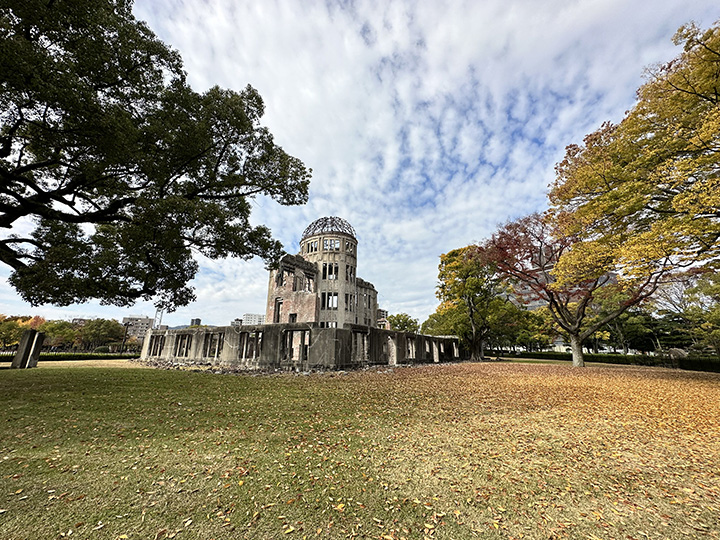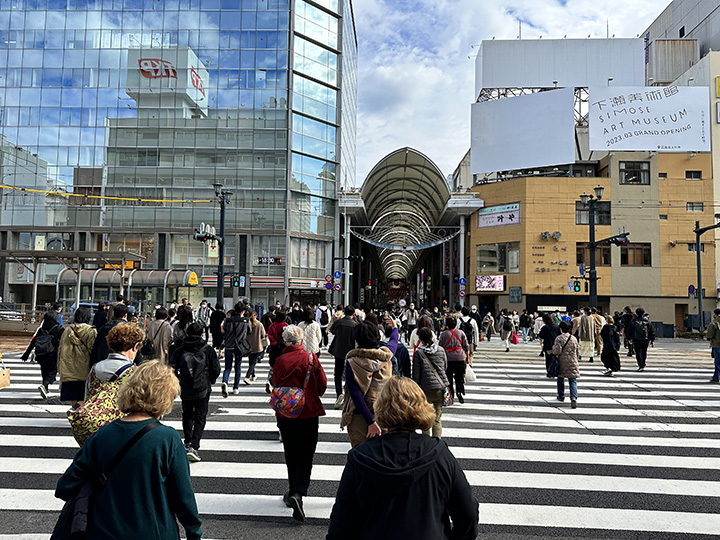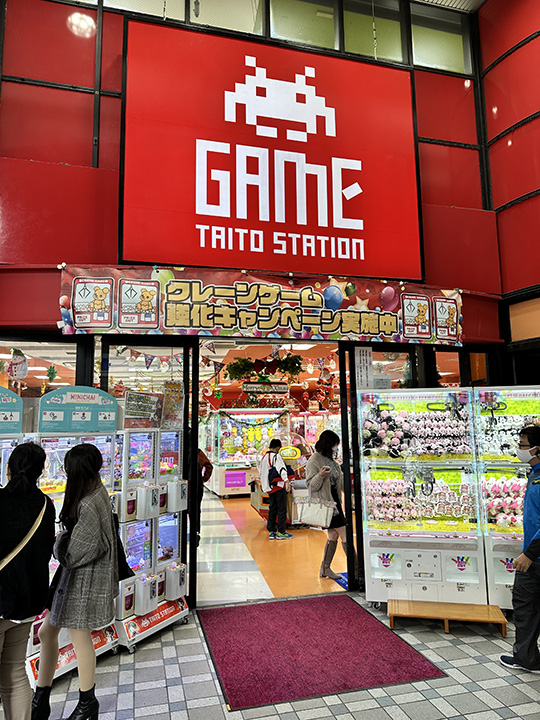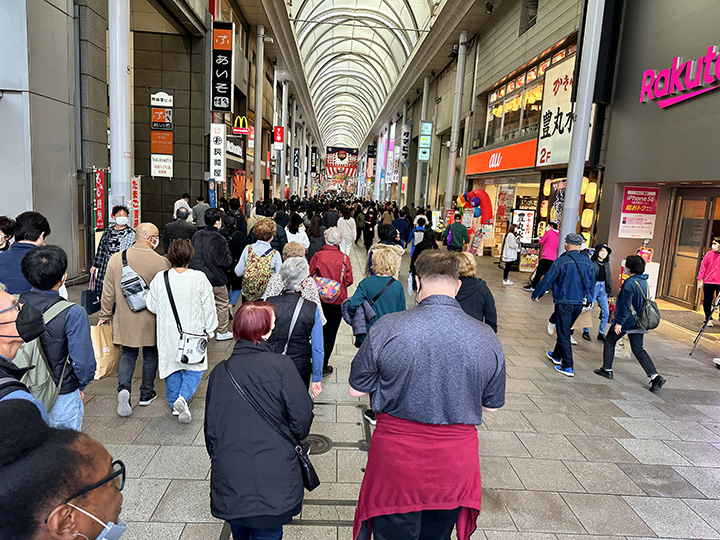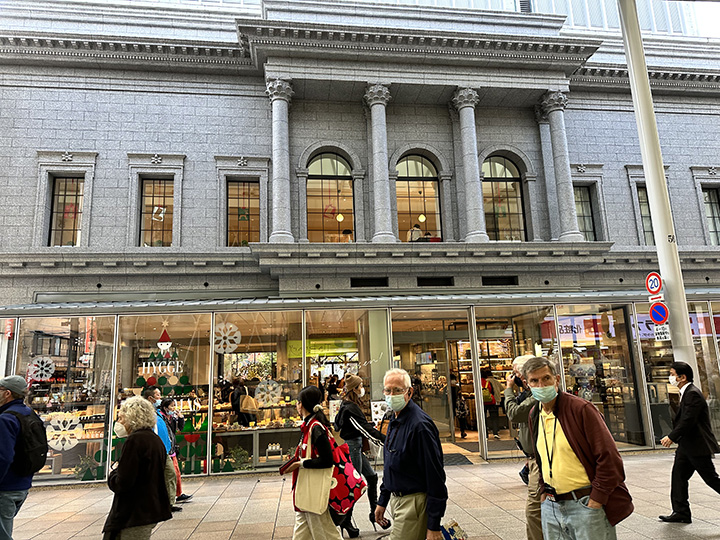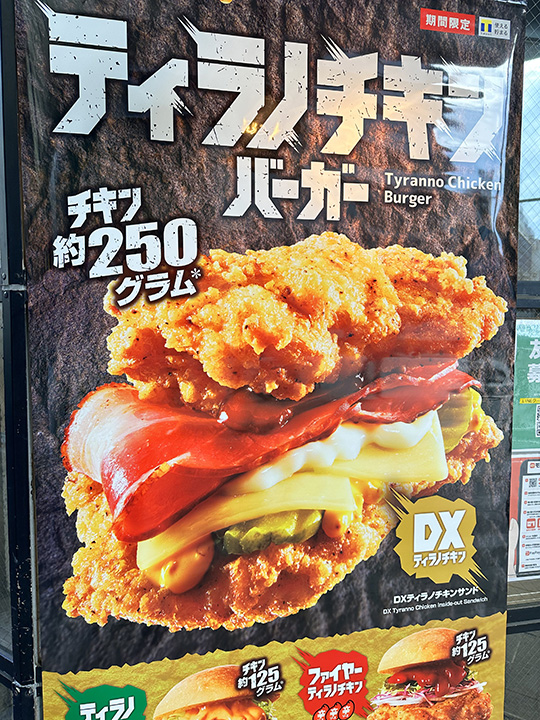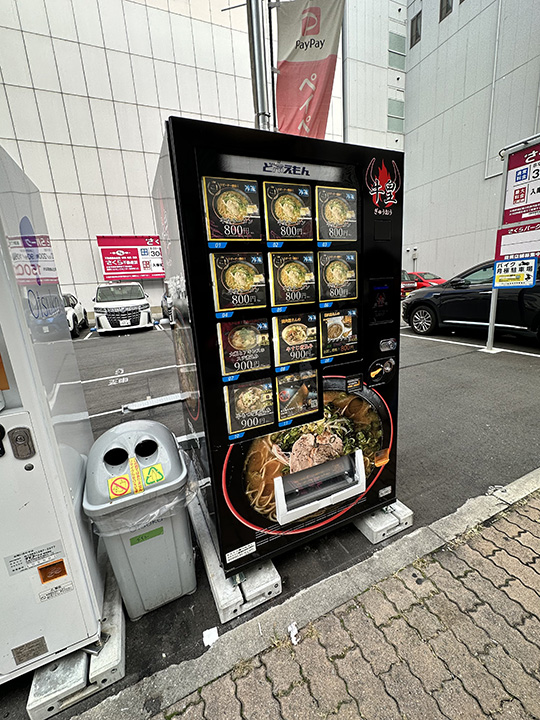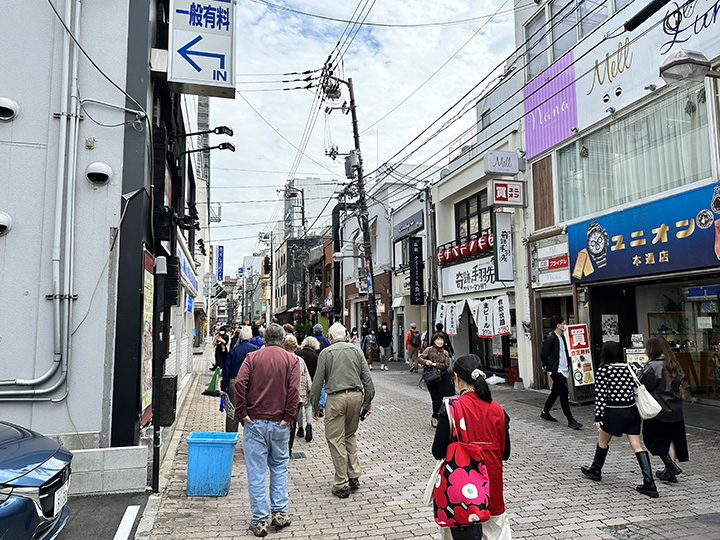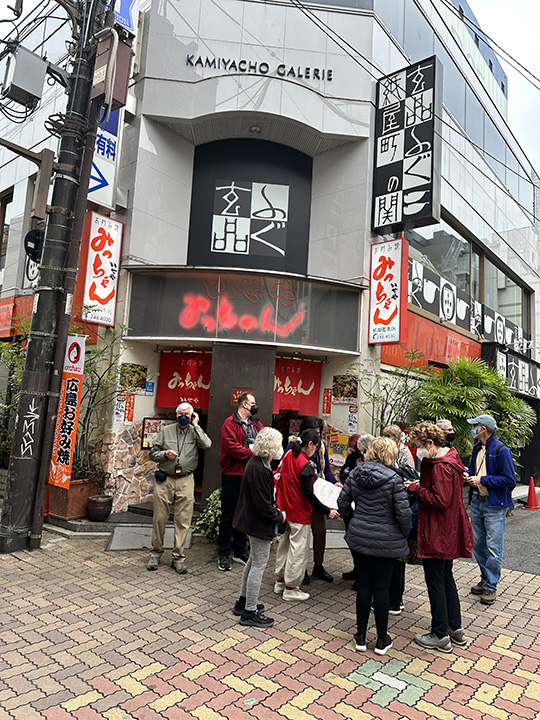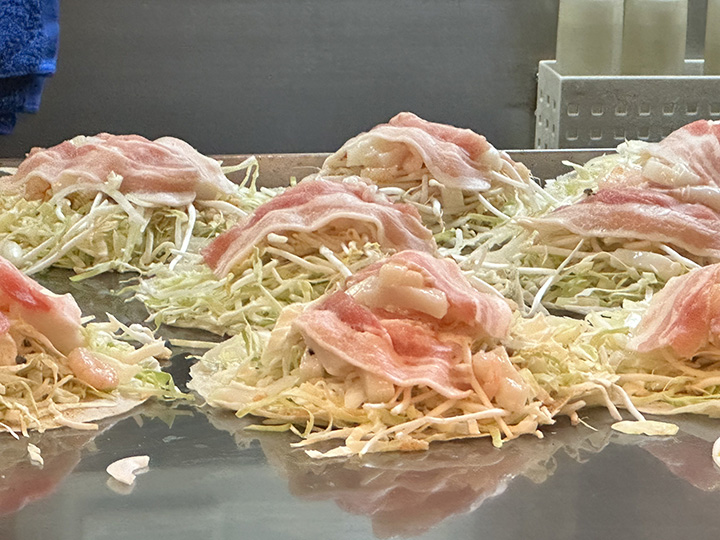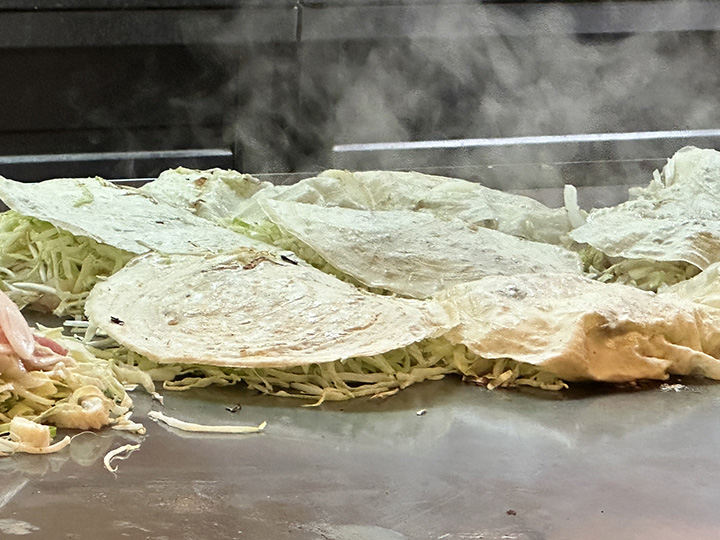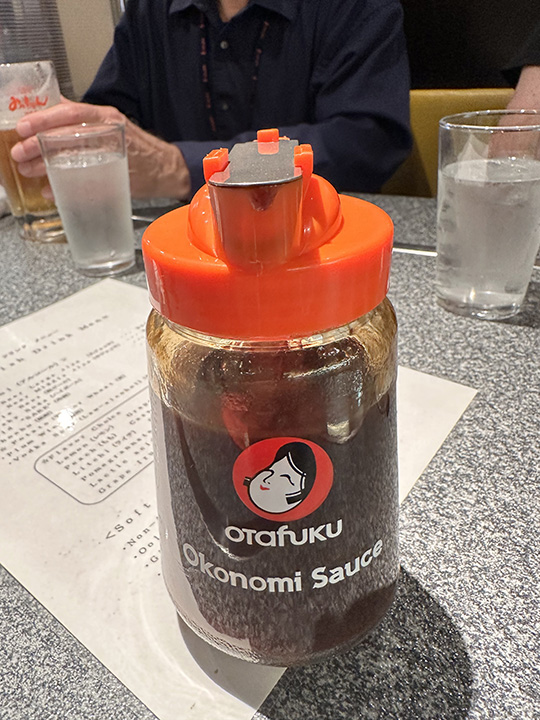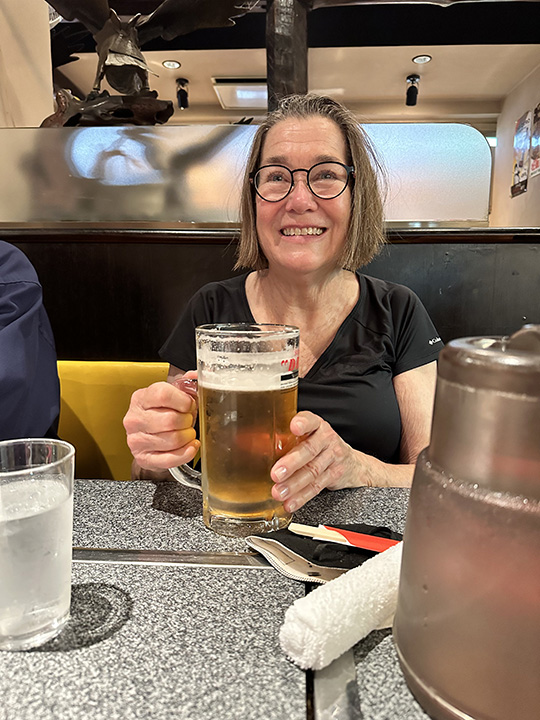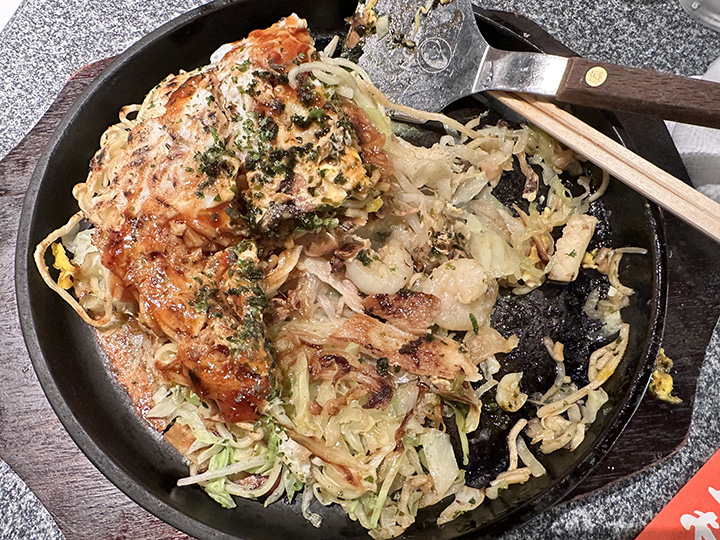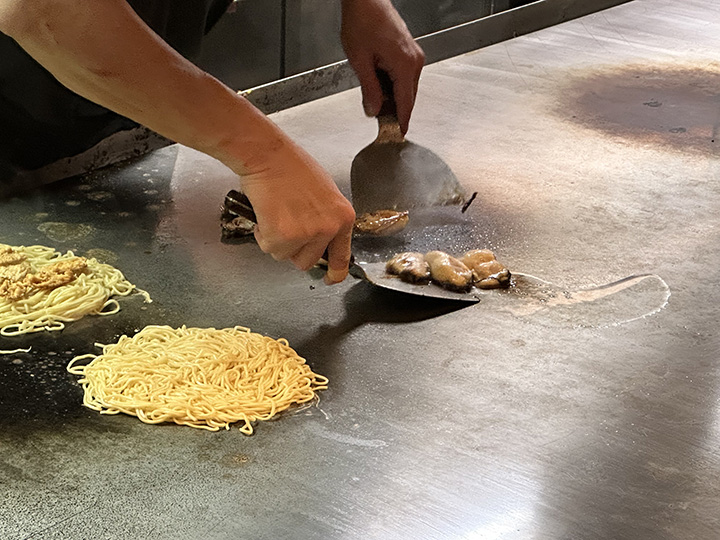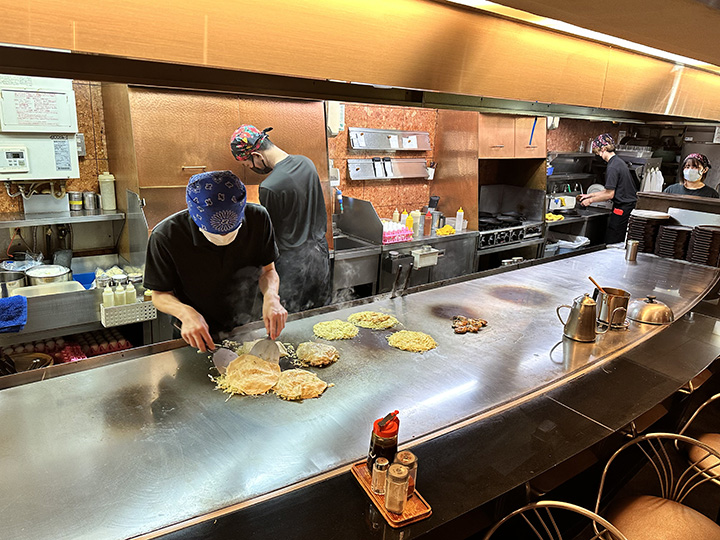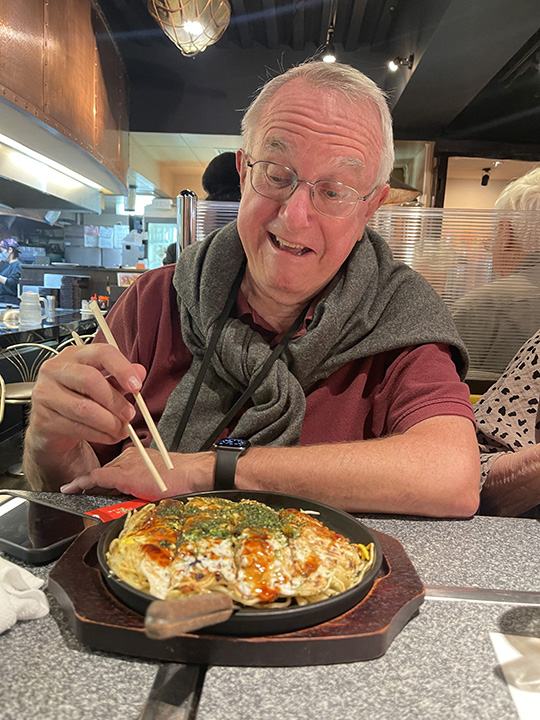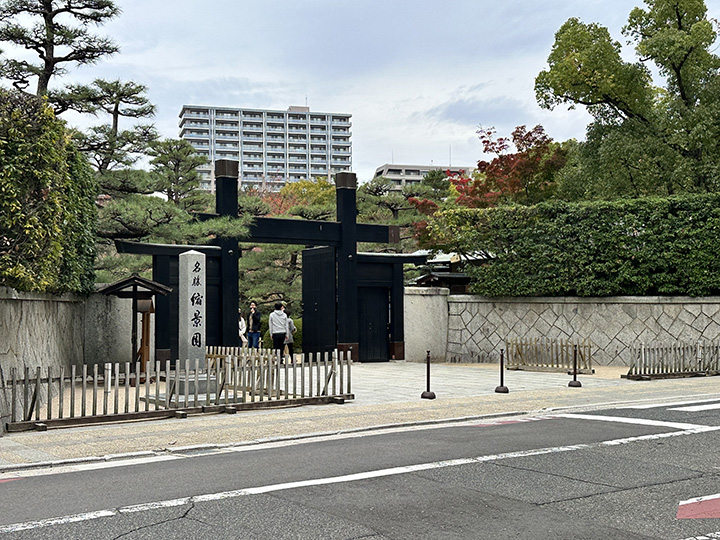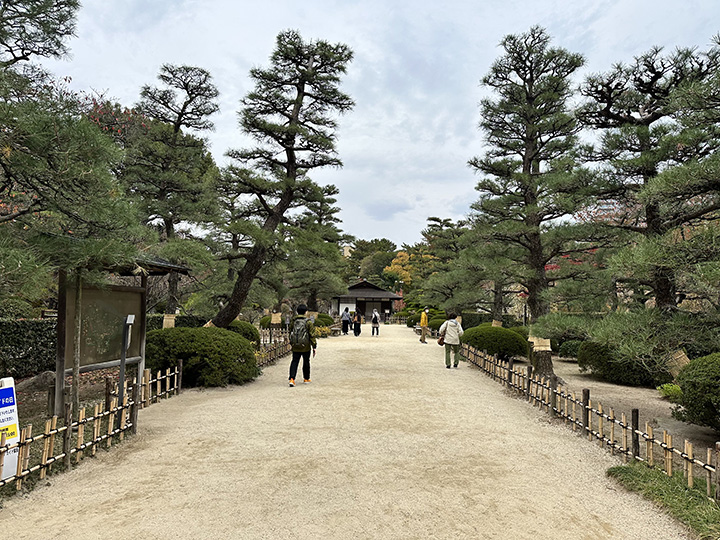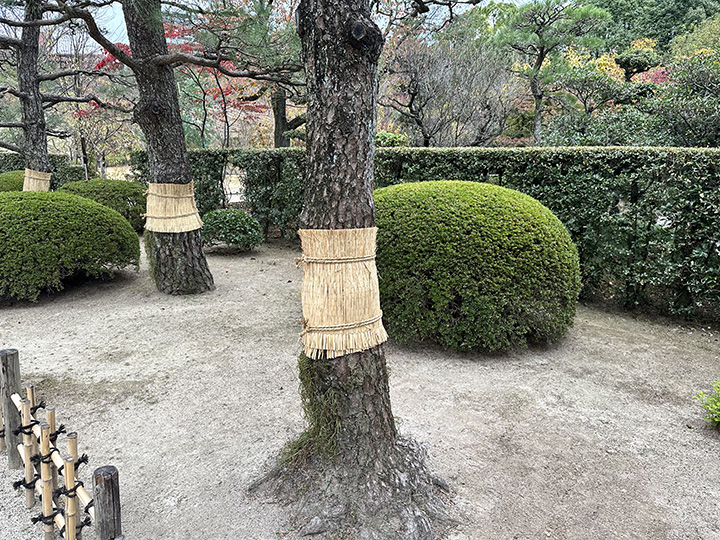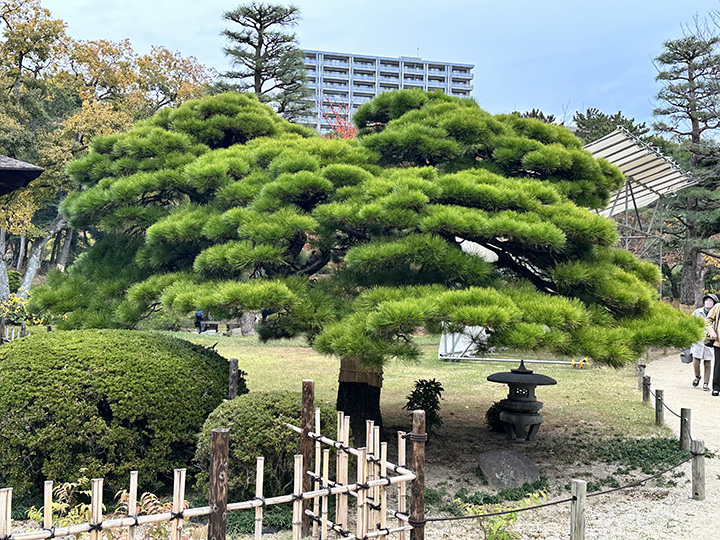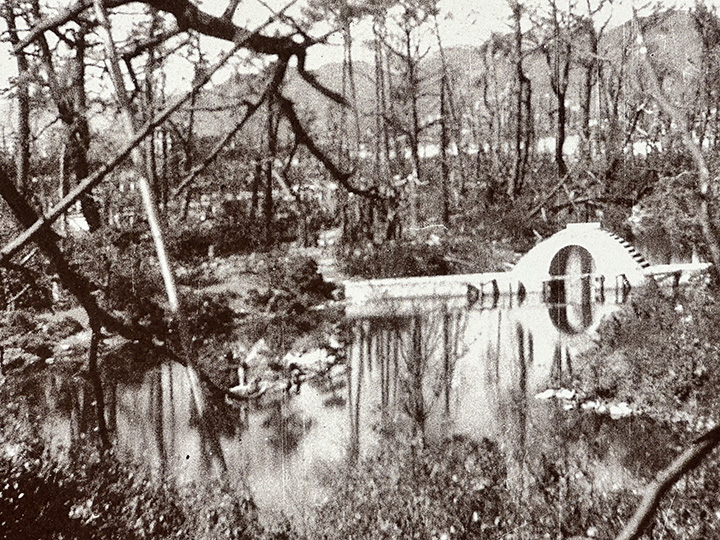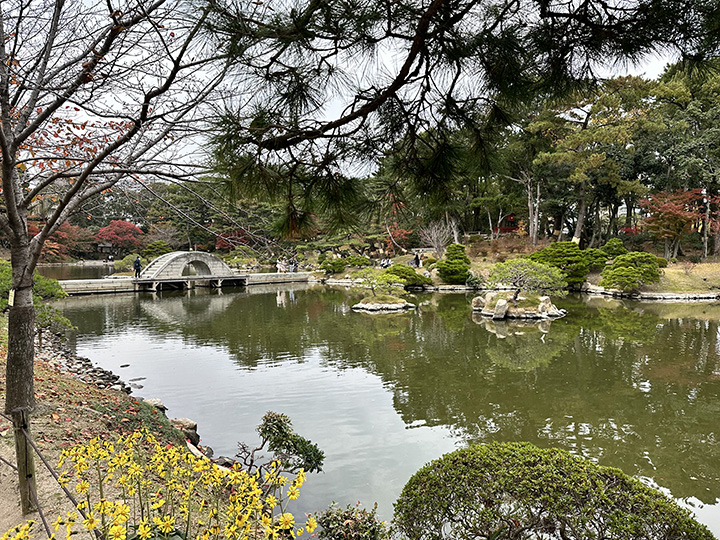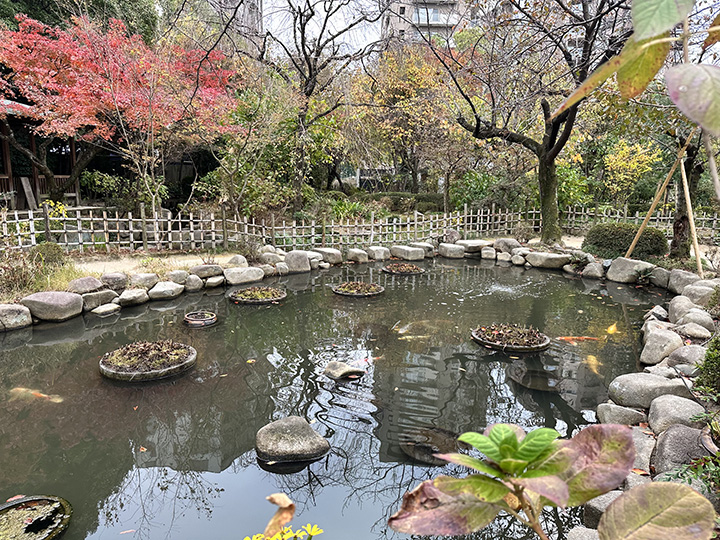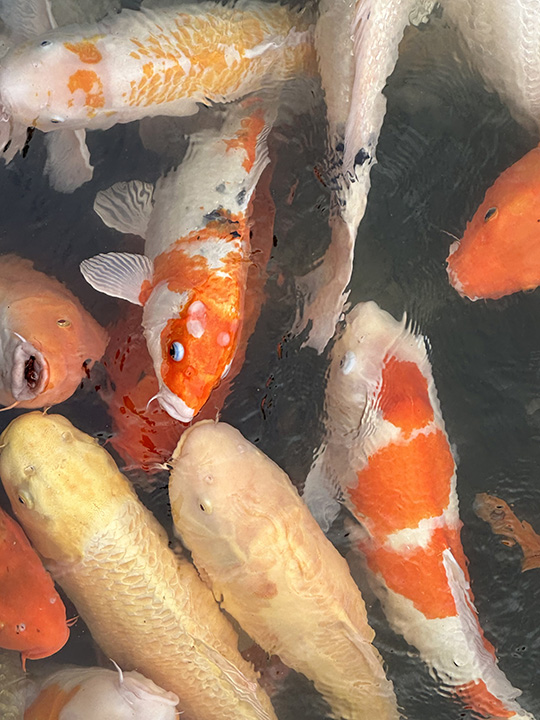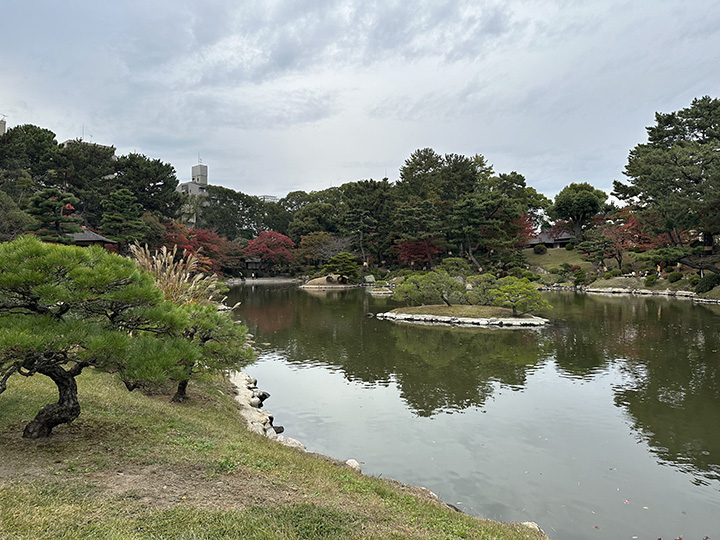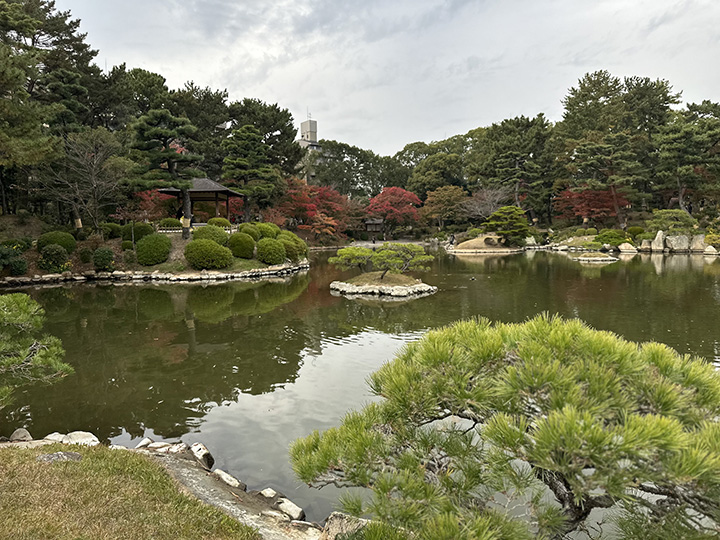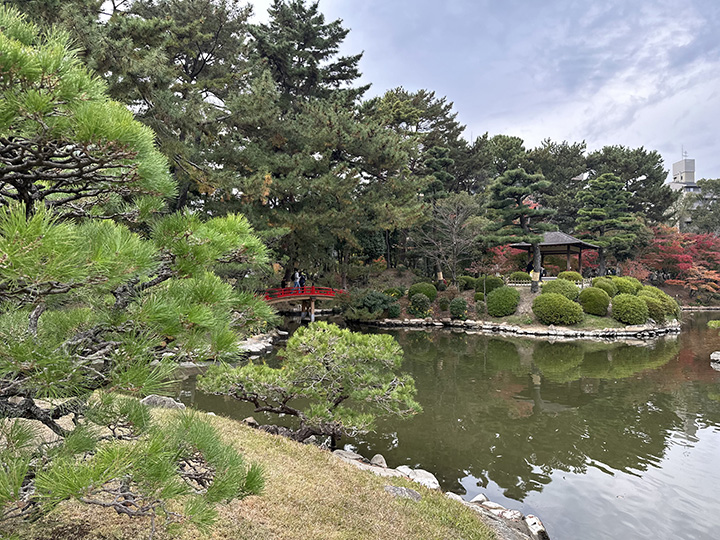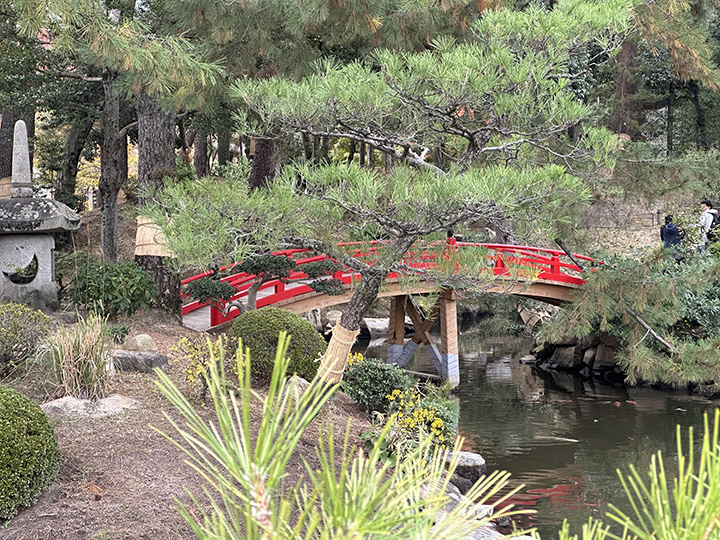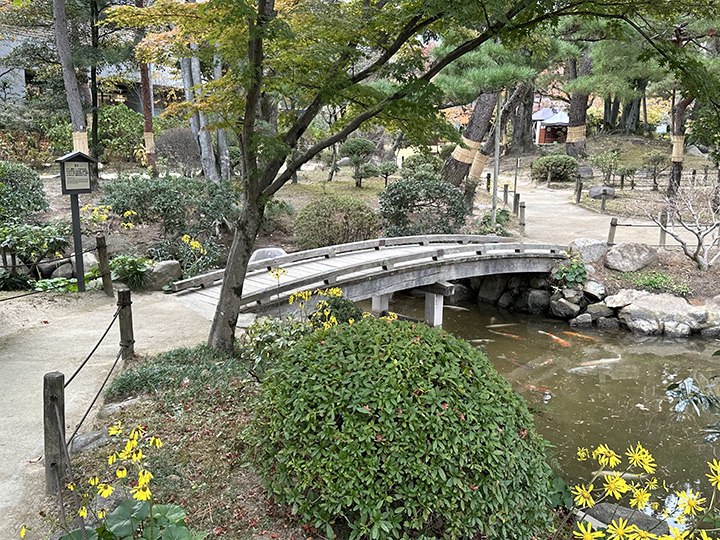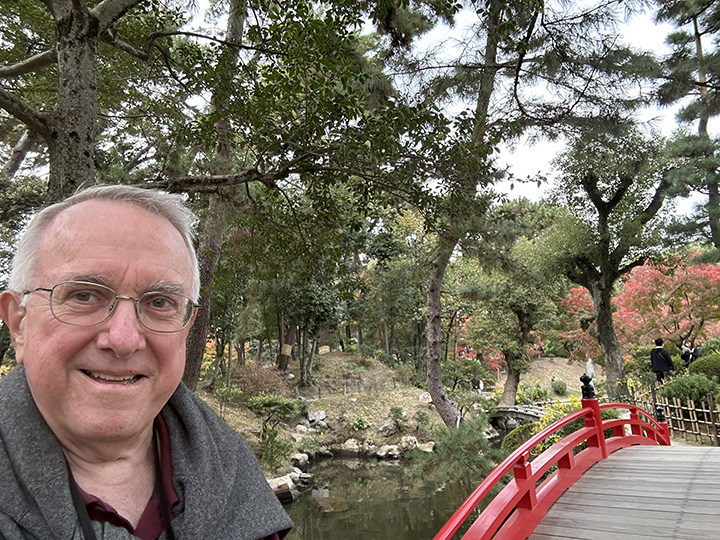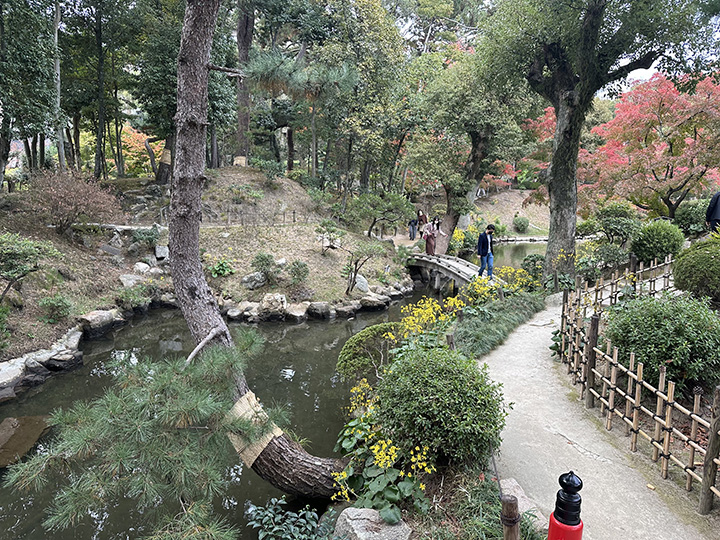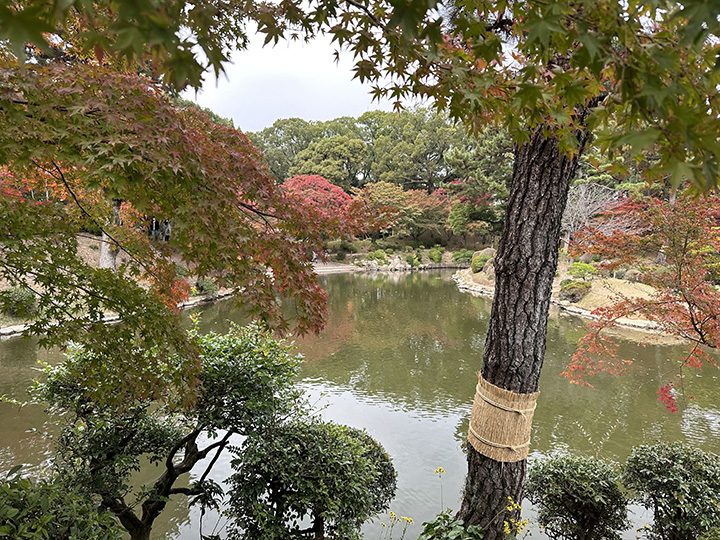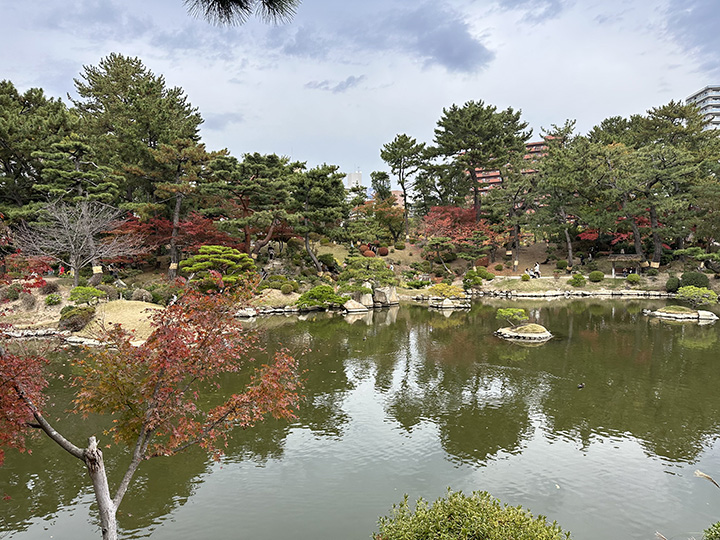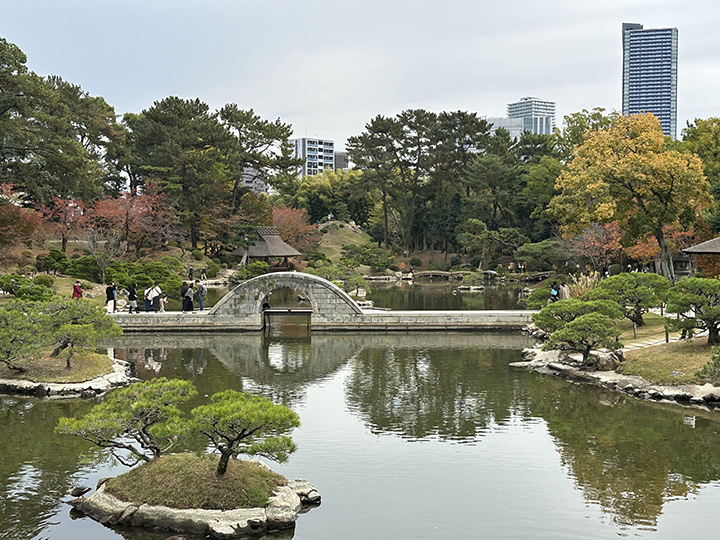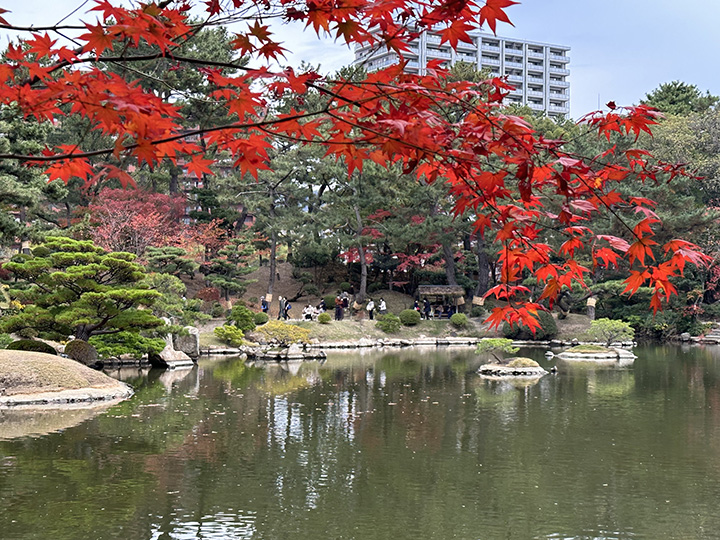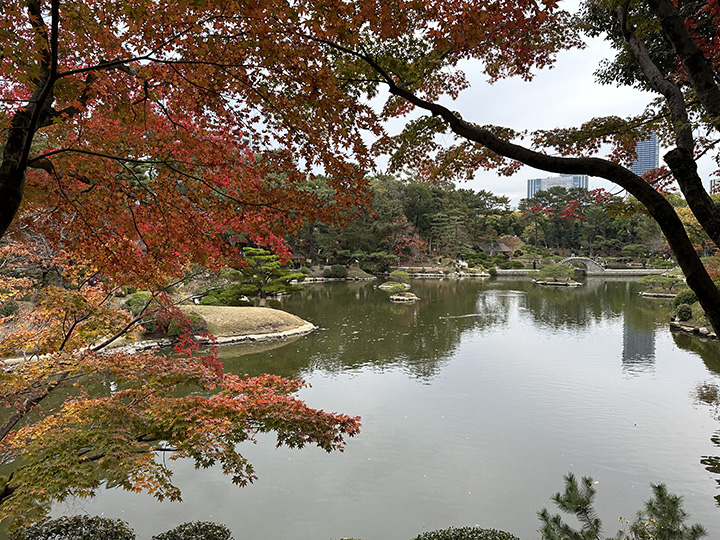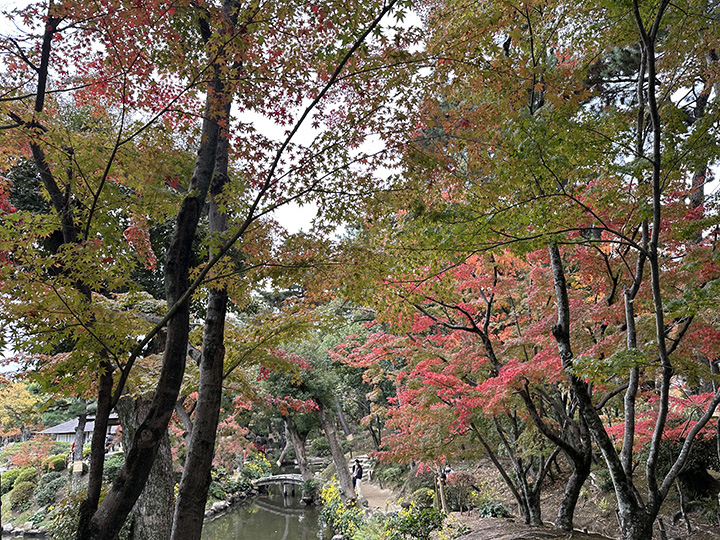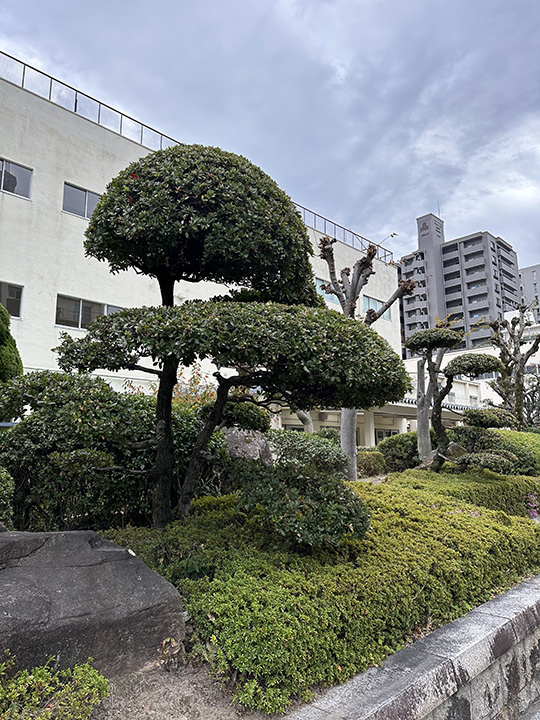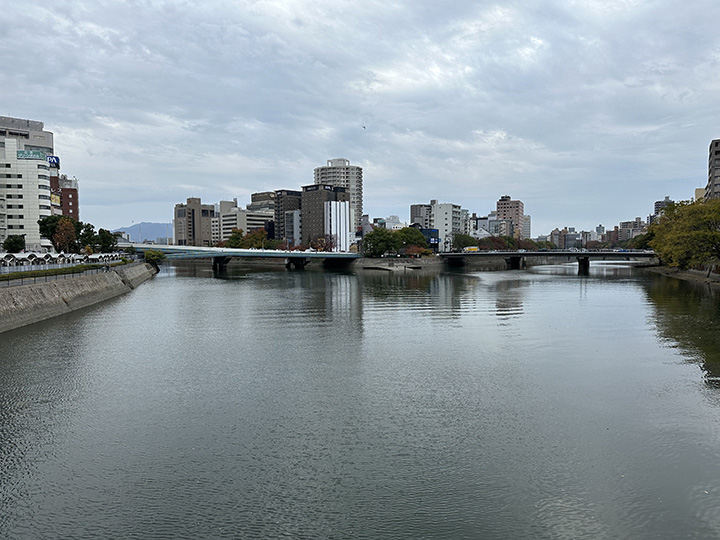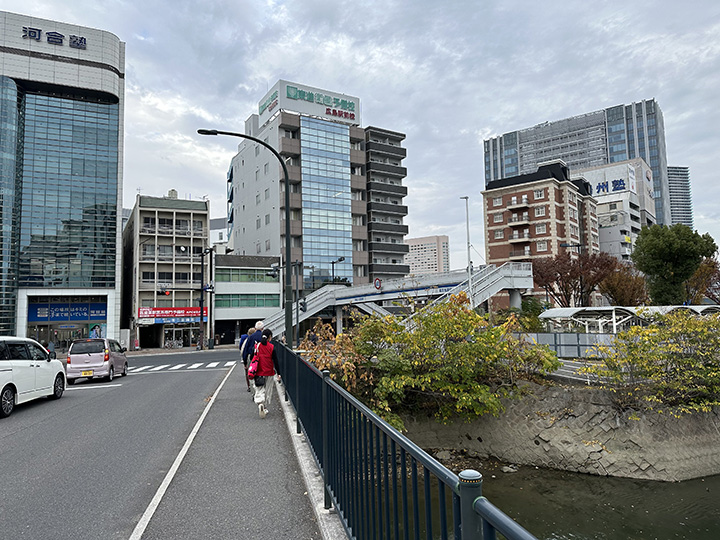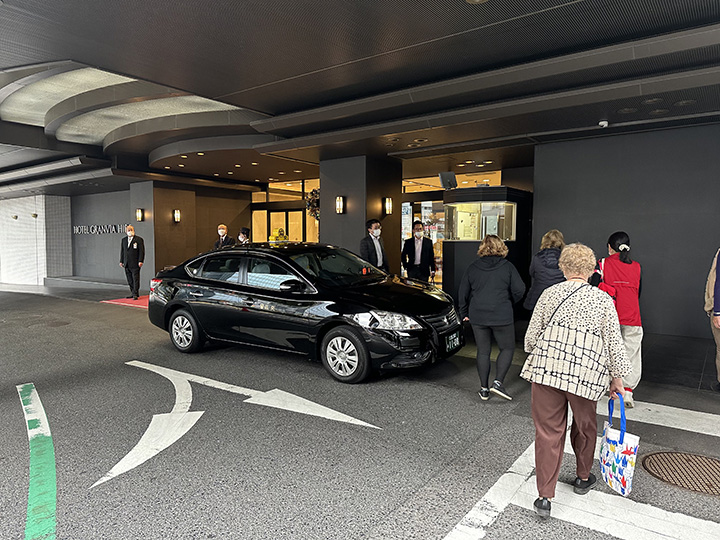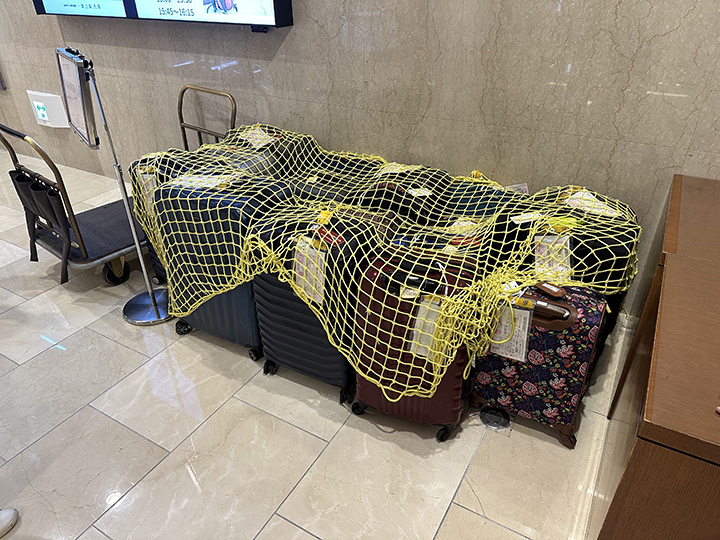|
|
|
Today we toured a museum dedicated to remembering the first use of an atomic bomb in war, heard from a representative of bomb survivors, toured a peace park, ate some interesting Japanese food for lunch, and walked through a lovely garden.
This morning I was astonished by the complexity of my hotel room shower.
Who would ever have thought a faucet might require a liquid crystal display?
Breakfast was a buffet. I tried lots of things and I think I'm becoming fond of the potato salad in the lower right. It's one of the few things that tastes like I expect it to taste.
We have our taxi rides down to a science now. My particular team includes Don and Mary. Don always pays the driver using the packet Road Scholar provides, and I always get to sit in the front seat. It’s a great system.
The Hiroshima Peace Memorial Museum is a museum located in Hiroshima Peace Memorial Park, in central Hiroshima, Japan, dedicated to documenting the atomic bombing of Hiroshima in World War II. The museum was established in August 1955.
There's more of it over there.
We're going to hear a presentation on what happened here.
A "peace crane" is an origami crane used as peace symbol, by reference to the story of Sadako Sasaki (1943– 1955), a Japanese victim of the long-term effects of the nuclear bombing of Hiroshima in 1945. Sasaki was one of the most widely known hibakusha (Japanese for "bomb-affected person"), said to have folded one thousand origami cranes before her death. All of us received one.
A few atomic bomb survivors are still living, but most are so elderly they can no longer make presentations at the museum as they have done for many years. They have designated successors to make their presentations for them.
This lady spoke on behalf of her friend Shosho Kawamoto, who along with many other children had been evacuated from the city on the day the bomb dropped. His parents were killed and his sister who survived the blast, died a short while afterward from radiation sickness. A child with no family, he persevered through bouts of depression and eventually had a successful career. In retirement he made presentations here at the museum in which he told his story and promoted peace.
She made a very nice presentation on his behalf. In her speech she mentioned that Japan attacked Pearl Harbor on December 8, 1945. Well of course that was the date. In Japan.
I thought this was interesting. There was concern in Hiroshima because they had not been targeted for air raids like other big cities. They were wondering why.
They did take the precaution of evacuating children from the city.
And this is one of those children. Mr. Kawamoto lost all his family to the atomic bomb, but after some struggles as a young man he had a successful career and spent many years of his retirement telling his story here at the Peace Memorial Hall. Now he is allowing others to tell his story for him.
This shows the size of the blast.
And now at the center of that big red blotch on the map there is a park dedicated to the memory of those who perished and to efforts to prevent future nuclear warfare.
The grounds of the Peace Memorial Park are lovely this morning.
And hundreds of people have come here to enjoy the park and contemplate its meaning.
Now we are lined up to see the museum.
The first thing was saw was a countdown clock that indicates the world's march toward nuclear disaster.
It hasn't self-destructed yet. Hope it never does.
The museum showed pictures of Hiroshima before the atomic bomb.
A big, bustling Japanese city.
But on August 6, 1945, all that changed.
Not much was left standing.
Here's what happened.
And here's what it looked like from the ground a good distance away.
A survivor's impression.
The heat fused objects together.
The museum showed many personal articles that barely survived the blast.
Some things were reduced to rubble; some things survived.
The dark spot is where someone was sitting when he or she was obliterated.
This dress is stained by the "dark rain" that fell after the blast. It was reported to be sticky, water mixed with radioactive dust. And of course it was deadly.
Glass bottles fused by the intense heat.
The museum displays the stories of many who were lost.
It’s a model of the old Hiroshima Industry
Promotion Hall, the ruins of which have been left standing as a
reminder. The museum is very well done. I shot several more
photographs I have not included here because there is no need to
belabor the point. War is bad, atomic bombs are bad, people suffer
unimaginably.
That was intense. Let's go back outside.
And maybe have some ice cream.
Don and Mary are ready for a break.
I think it must be orange juice.
That Chinese parasol tree has an interesting history. Though it has been transplanted here from 1,300 meters away, it did survive the blast and has the scars to prove it. Some people believed nothing would grow in Hiroshima for 75 years, but they were wrong.
See?
This concrete structure highlights and eternal flame dedicated to peace. The flame comes from Miyajima, the sacred island we visited yesterday.
I think Kathleen didn't appreciate me calling it a Conestoga wagon.
Let's go see what's left of the old Industry Promotion Hall.
There will be pretty fall colors along the way.
Everywhere you look.
You'd think my fascination with the beautiful colors would have waned by now, but it hasn't
I could snap pictures like this all day. And so I did.
This monument honoring Koreans killed in the blast is a recent addition to the park. I think the delay had something to do with politics.
Don and Mary are enjoying the colors too.,
This is called the "Children's Peace Monument"
In Japan, there is a custom called Senbazuru (literally “1,000 cranes”) where people string together Orizuru (origami cranes) in groups of about 1,000 using thread, to pray for a recovery from disease or for peace. Visitors to Peace Memorial Park see brightly colored paper cranes everywhere. These paper cranes come originally from the ancient Japanese tradition of origami or paper folding, but today they are known as a symbol of peace. They are folded as a wish for peace in many countries around the world. This connection between paper cranes and peace can be traced back to a young girl named Sadako Sasaki, who died of leukemia ten years after the atomic bombing.
Sadako was two years old when she was exposed to the atomic bomb. She had no apparent injuries and grew into a strong and healthy girl. However, nine years later in the fall when she was in the sixth grade of elementary school (1954), she suddenly developed signs of an illness. In February the following year she was diagnosed with leukemia and was admitted to the Hiroshima Red Cross Hospital. Believing that folding paper cranes would help her recover, she kept folding them to the end, but on October 25, 1955, after an eight-month struggle with the disease, she passed away.
Sadako's death triggered a campaign to build a monument to pray for world peace and the peaceful repose of the many children killed by the atomic bomb. The Children's Peace Monument that stands in Peace Memorial Park was built with funds donated from all over Japan. Later, this story spread to the world, and now, approximately 10 million cranes are offered each year before the Children's Peace Monument.
That bank withstood the blast because it was made of reinforced concrete. Of course it has been extensively refurbished.
We're getting closer to the Industry Promotion Hall.
That is the rebuilt Aioi-bashi Bridge, which was used as the target for the atomic bomb. The Industry Promotion Hall is to the right.
It has been left as it was after the blast to serve as a reminder of the destruction.
Even with fall colors, it is a stark reminder of the horror.
That is the Motoyasu River
The A-bomb Dome standing quietly on the bank of the Motoyasu River is the remains of the Hiroshima Prefectural Industrial Promotion Hall, which was nearly directly under the atomic bomb that exploded at 8:15 A.M., August 6, 1945.
The name A-bomb Dome emerged spontaneously due to the shape left at the top of the destroyed building.
That heron was keeping a close eye on us.
It is a sobering sight.
This appeared in a diary written by KAJIYAMA Hiroko, a high school student girl who died to leukemia. After the war, some were of the opinion that the A-bomb Dome should be preserved as a monument, while others said it should be torn down because it was a dangerous building or because it was a reminder of the tragedy of the bombing. As the controversy continued, people who were impressed by the diary of Ms. KAJIYAMA started collecting donations and signatures to support the preservation of the A-bomb Dome. The action led to move Hiroshima City Council and the mayor of the City of Hiroshima. In 1966, the Hiroshima City Council unanimously passed a resolution to permanently preserve the A-bomb Dome. In 1967, the first preservation work conducted with the donations began. 20 years was passed since the atomic bomb had been dropped on Hiroshima.
When Japan joined the UNESCO World Heritage Convention in 1992, people including a-bombed survivors began to raise their voice in support of making the A-bomb Dome a World Heritage Site. A national campaign to collect signatures conducted by the citizens of Hiroshima was a success, and it was designated as a national historical site in June 1995 and registered on the list of World Heritage Sites in 1996 as a symbol calling for the abolition of nuclear weapons and for world peace.
And just like that we leave a scene of unimaginable destruction and suffering to go shopping.
Need any games? They have them here.
And just about anything else you can imagine.
Listen to the music. I told you they love Christmas around here.
Kathleen said that's also a building that survived the blast, and of course it has undergone extensive restoration. Hi Brian. Hi Charley.
Didn't Colonel Kentucky try this a few years back? A sandwich that replaces the bun with chicken patties? Didn't work out, as I recall.
A vending machine that dispenses hot noodles right there on the parking lot sidewalk. Things are so convenient around here!
We're hungry. Let's find the restaurant Road Scholar has picked for our lunch.
Ah, there it is.
They are making something like a Japanese burrito.
Here's how they do it.
Looks yummy, right?
It's called okonomiyaki. Never heard of it? Neither had I. Turns out it is a Hiroshima specialty, and they think of it as a “savory pancake.” Okonomiyaki is mainly associated with two distinct variants from Hiroshima or the Kansai region of Japan, but is widely available throughout the country, with toppings and batters varying by area. The name is derived from the word okonomi, meaning "how you like" or "what you like", and yaki, meaning "grilled". It is an example of konamono (konamon in the Kansai dialect), or flour-based Japanese cuisine.
The sauce is a bit reminiscent kinda a little sorta of Memphis barbecue sauce. It's made with Worcestershire sauce, aonori (dried seaweed flakes), katsuobushi (bonito flakes), Japanese mayonnaise, and pickled ginger. Like I said, just like back at home in Tennessee.
Mary asked for a large beer and I think was a little surprised by just how large it turned out to be.
This is what it looks like when it's ready.
Hey Grandpa, what's fer supper? Shredded cabbage, bean sprout, noodles, sliced pork belly, shrimp, and a fried egg, topped with savory sauce and Japanese mayo. Yum, yum!
They'll even make you some oysters with spaghetti.
And make a burrito out of that too. Very creative.
It tasted fine and it was fun to eat a local specialty in Hiroshima.
Now let’s visit Shukkeien Garden.
Construction began in 1620 during the Edo
period at the order of Asano Nagaakira, daimyō of the Hiroshima han.
Shukkei-en was constructed by Ueda Sōko, who served lord Asano as
chief retainer (karō) of the domain and as a tea master.
As winter approaches, insects begin looking for someplace warm and they crawl up trees. The straw is attached to the trees to entangle insects, protecting the trees, and when spring comes the straw is removed and burned. Well, that’s what Kathleen sad.
Some plants need a lot of straw.
A horticultural masterpiece.
After the atomic blast, a stone bridge remained in what little was left of the garden
And there it is still.
I think I see some goldfish.
Yep. Creepy little critters, aren't they?
Bill is enjoying this.
It's lovely this way.
And it's lovely that way.
It's lovely that way too.
It's lovely over here.
It's lovely over there. But wait...
Vicious goldfish could attach while crossing that bridge.
Bill chose another route.
OK, maybe that's going to be enough lovely.
Just one more shot.
Two more.
OK, I give up.
This place is just too pretty.
We need to get out of here.
I can't take this anymore!
Ah...just plain green stuff.
A treeless landscape.
We're going back to the hotel.
I hope our bags will be waiting for us.
And there they are. We had to do this several times on the trip. It would have been too much trouble to drag all our luggage on those trains and buses, so we'd pack a small overnight bag and send the big stuff on ahead by a delivery service. It always worked; our bags always found us a day later. Nice job, Road Scholar.
|

